Swaddling clothes

A live Nativity scene at St. Wenceslaus in New Prague Dec. 2 featured Carly Bartholomaus, a third-grade teacher at St. Wenceslaus Catholic School, as Mary; her husband, Joseph, as Joseph; and their son, Luke, as Jesus. This was the first-ever live Nativity at the parish, and was designed to precede New Prague’s annual Parade of Lights. The parish offered a running loop of a Nativity reenactment featuring music, animals, shepherds, angels and the Three Wise Men from 5 to 6:30 p.m., with the parade starting at 6:30.

December 8, 2022 • Newspaper of the Archdiocese of Saint Paul and Minneapolis
PASTORAL LETTER’S POSITIVE IMPACT 5 | A SCHOOL’S WARM WELCOME 6 | DECADES OF GIVING 10-11 NEW PATHS TO LEARNING 12 | SRI LANKA TO RICHFIELD 13 | PRAYER AND MUSIC CONVERGE 15
DAVE HRBACEK | THE CATHOLIC SPIRIT
Jesus, Mary and Joseph?
Boston Celtics interim head coach Joe Mazzulla’s reply to a reporter asking if he met with the royal family, implying England’s Prince William and Kate Middleton, as they attended a Nov. 30 Boston-Miami Heat basketball game in Boston. The reporter laughed and said she was talking about the prince and princess of Wales. “Oh, no, I did not. I’m only familiar with one royal family. I don’t know too much about that one,” said Mazzulla, a Rhode Island native who attended an all-boys, Catholic high school there, Bishop Hendricken High School. “But I’m glad they’re — hopefully they’re Celtic fans.”
NEWS notes
Ramsey County sheriff officials provide law enforcement and safety services to more than half-a-million people. Since the COVID-19 pandemic hit in March 2020, they have gone the extra mile in assisting the neediest in the county by picking up fresh food each week from local food distributors and delivering it to Catholic Charities of St. Paul and Minneapolis. To date, the office has delivered 125,000 pounds of food, including more than 100,000 pounds of fresh fruit and vegetables. Catholic Charities president and CEO, Michael Goar, and others with the nonprofit organization took time to say thank you Nov. 29 at Catholic Charities’ distribution center in St. Paul. Catholic Charities prepares and serves more than 2,000 meals every day at its 10 onsite meal programs across the Twin Cities.
Young adults hoping for a guaranteed spot with the Archdiocese of St. Paul and Minneapolis’ pilgrimage to World Youth Day 2023 have an extended deadline to sign up. The Nov. 15 deadline has been moved to Dec. 16, after which limited spaces will be available with a price increase of $450 above the current package cost. The July 29 through Aug. 7 trip to Lisbon, Portugal will include a visit to Fatima. More details and registration forms can be found at archSPm org/world youth day-2023
a.m. Nov.
St. Paul.
now
has
sainthood cause and brought a relic of her grandfather to include in the
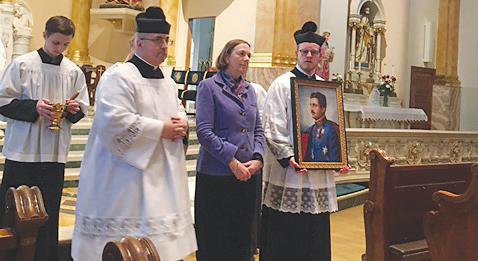
of a
to
at St. Agnes. When the parish was founded in 1887, the same year Blessed Karl was born, it served immigrants from the Austro-Hungarian empire. Neal Abbott, marketing and communications coordinator at St. Agnes, said the parish wants to honor its heritage, help further Blessed Karl’s cause for sainthood and hold him up as a model for young men and fathers. Blessed Karl’s uncle, Archduke Franz Ferdinand of Austria, was assassinated in 1914, a factor in the start of World War I. Blessed Karl ascended to the throne in 1916. Hoping to end the war, he secretly negotiated for peace with the Allies. He failed and was exiled in 1919. He died in 1922 at age 34.
PRACTICING Catholic
On the Dec. 2 “Practicing Catholic” radio show, host Patrick Conley interviews Mike RiosKeating, social justice education manager at Catholic Charities of St. Paul and Minneapolis, about the nonprofit organization’s 30th annual Giving Tree at the Mall of America Dec. 17-18. The event provides an opportunity for Christmas shoppers, families and others to give to the needy in the broader community. The latest show also includes School Sister of Notre Dame Lynore Girmscheid discussing the Dec. 10-11 collection during parish Masses for the Retirement Fund for Religious. Listen to interviews after they have aired at PracticingcatholicShow com or anchor fm/Practicing catholic Show with links to streaming platforms.
The Catholic Spirit is published semi-monthly for The Archdiocese of Saint Paul and Minneapolis Vol. 27 — No. 23
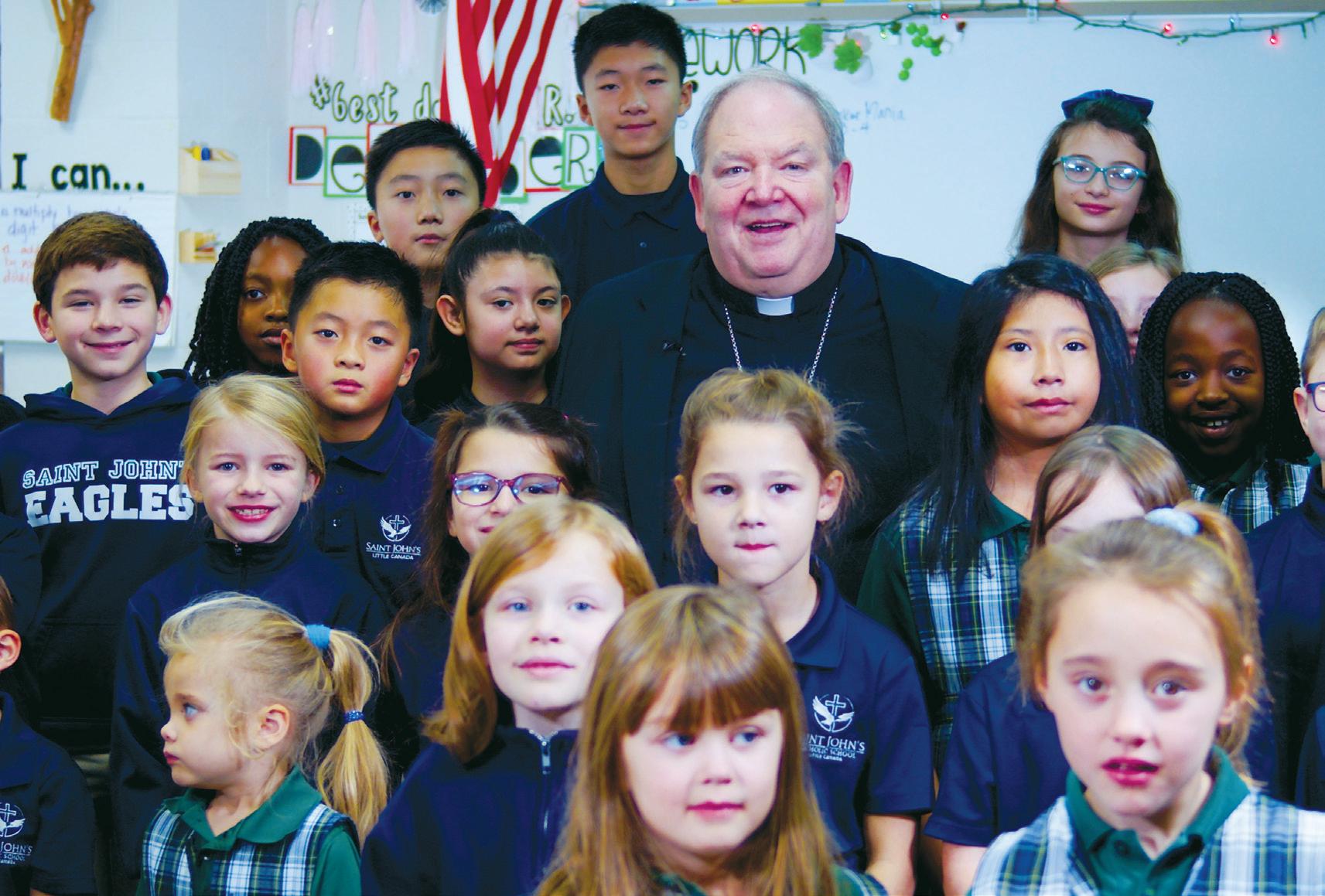 JOE
JOE
American seminarians in Rome began Thanksgiving Day with a race around the world’s smallest country. And a seminarian from the Archdiocese of St. Paul and Minneapolis won, Catholic News Agency reports. The 13th Annual Thanksgiving Turkey Trot around Vatican City State kicked off with an early start Nov. 24 at the Pontifical North American College. More than 130 seminarians, priests and Catholic college students gathered near the starting line at 5:30 a.m. with T-shirts proudly proclaiming, “the world’s only 5K to go around a sovereign nation.” The race brought the runners up the Vatican Hill and along the outside of the centuries-old 39-foot walls that encircle the Vatican Gardens before crossing in front of St. Peter’s Square ahead of the final stretch up the Janiculum Hill back to the college. In total, the runners ascended 262 feet in just over three miles. “It was a very fun, close race between a few of us,” said race winner Michael Maloney, pictured at the far right, who hails from St. Charles Borromeo in St. Anthony and is in his third year studying in Rome. Maloney said his favorite spot to run in the Eternal City is Villa Doria Pamphili park on the Janiculum Hill.

St. John Vianney College Seminary’s renovation project is progressing nicely, with scaffolding around a 20,000-square-foot addition that includes a new chapel. The seminary in St. Paul will have new meeting rooms and residences for priests who live and work there. Updated residence halls, floor lounges, kitchen and dining areas and restrooms have already been completed. St. John Vianney is one of the largest college seminaries in the United States, drawing men discerning the priesthood from dioceses across the nation. About 100 undergraduate men are in formation each year. The $10 million construction effort — projected for completion in May 2023 — is being funded by the seminary’s benefactors and sponsoring dioceses. More information can be found at SjvSeminary org/SjvbuildingProject
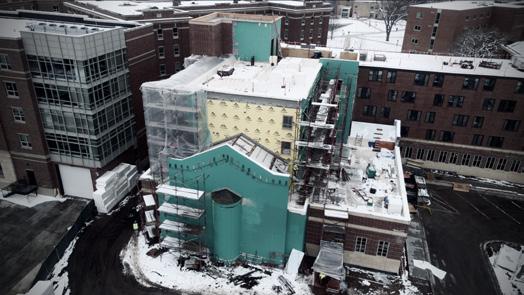
Materials credited to CNS copyrighted by Catholic News Service.
All other materials copyrighted by The Catholic Spirit Newspaper.
Subscriptions: $29.95 per year; Senior 1-year: $24.95.
To subscribe: (651) 291-4444; Display Advertising: (651) 291-4444; Classified Advertising: (651) 290-1631.
Published semi-monthly by the Office of Communications, Archdiocese of St. Paul and Minneapolis, 777 Forest St., St. Paul, MN 55106-3857 • (651) 291-4444, FAX (651) 291-4460.
Period cals postage paid at St. Paul, MN, and additional post offices.
Postmaster: Send address changes to The Catholic Spirit, 777 Forest St., St.Paul, MN 55106-3857.
TheCatholicSpirit.com • email: tcssubscriptions@archspm.org • USPS #093-580
United in Faith, Hope and Love
MOST REVEREND BERNARD A. HEBDA, Publisher
TOM HALDEN, Associate Publisher
2 • THE CATHOLIC SPIRIT DECEMBER 8, 2022
RUFF, Editor-in-Chief
COURTESY DANIEL A. TURNER BLESSED KARL Princess Maria-Anna Galitzine, granddaughter of Blessed Karl of Austria, is flanked by Father James McConville, left, and acolyte Sean Pilcher, who is holding a portrait of Blessed Karl, at the 10:30
20 Mass at St. Agnes in
Princess Galitzine,
of Houston,
been active in her grandfather’s
dedication
shrine
Blessed Karl
ZACH JANSEN | ARCHDIOCESE OF ST. PAUL AND MINNEAPOLIS
PAGETWO
CONGRATS AND THANK YOU Archbishop Bernard Hebda joins students from St. John’s Catholic School in Little Canada Dec. 2 in this screenshot from a video congratulating Catholic schools in the Archdiocese of St. Paul and Minneapolis and thanking supporters for a third consecutive year of enrollment growth. More than 31,000 students are in Catholic preschool through 12th grade in the archdiocese this school year, a nearly 9 percent increase from 2019-2020. Watch the video at tinyurl com/ra6x95ty
ONLY JESUS | ARCHBISHOP BERNARD HEBDA

Opening the door of charity
Irecently had the privilege of presiding at the funeral of Bishop Paul Swain, the bishop emeritus of the Diocese of Sioux Falls.
A man of deep faith with a strong sense of service, Bishop Swain had been extremely helpful to me when I was first named to this archdiocese. The fact that we had both worked as lawyers before ordination gave us a common language and frame of reference.

Recalling his many kindnesses to me, I was particularly grateful for the opportunity to preach at his funeral Mass. The occasion, however, reminded me that I get more than my share of butterflies in the stomach whenever it falls to me to “break open the Word” in the presence of brother bishops. I cannot even imagine how it would feel if I ever had to preach to the pope!
Fortunately for me, the position of Preacher to the Pontifical Household is already taken: For the last 42 years, Raniero Cantalamessa, an Italian Capuchin friar, has borne the responsibility of that office, preaching each Advent and Lent to the pope and his most senior staff. He’s done it so successfully that Pope Francis named him a cardinal in 2020. His Eminence is a great scholar but an even better preacher. In the first of his three Advent homilies this year, Cardinal Cantalamessa painted an intriguing picture of Christ’s coming: Imagine being separated from Jesus by a door that opens from the inside and outside at the same time with two keys, one being in the hand of Jesus and the other in ours. We cannot open the
Abriendo la puerta de la caridad
Recientemente tuve el privilegio de presidir el funeral del obispo Paul Swain, obispo emérito de la Diócesis de Sioux Falls. Un hombre de fe profunda con un fuerte sentido de servicio, el obispo Swain fue de gran ayuda para mí cuando me nombraron por primera vez para esta arquidiócesis. El hecho de que ambos hubiésemos trabajado como abogados antes de la ordenación nos proporcionó un lenguaje y un marco de referencia comunes.
Recordando sus muchas bondades conmigo, estaba particularmente agradecido por la oportunidad de predicar en su misa fúnebre. La ocasión, sin embargo, me recordó que tengo más mariposas en el estómago que mi parte cada vez que se me ocurre “abrir el Palabra” en presencia de los hermanos obispos. ¡Ni siquiera puedo imaginar cómo me sentiría si alguna vez tuviera que predicar al Papa!
Afortunadamente para mí, el cargo
door without the help of God and Jesus chooses not to open it without our cooperation. Cardinal Cantalamessa suggested that there are three ways that the door can be opened: faith, hope and charity, so distinct that we could even speak of a “door of faith,” a “door of hope” and a “door of charity.”
While we will have to wait until Dec. 17 to hear Cardinal Cantalamessa preach on the “door of charity,” I’m pleased that this issue of The Catholic Spirit is already shedding Advent light on this theme as it addresses the “spirit of giving.” As I recently mentioned in the pastoral letter, “You Will be My
Witnesses,” we are blessed to have so many examples of “foot washing” in this local Church, as our brothers and sisters imitate Jesus in pouring themselves out in service to others, giving from the heart.
Even though the “spirit of giving” needs to be a priority throughout the year, Advent seems to be a particularly fine time for exploring the door of charity. So many of our practices and traditions at this time of year lead us to and through that door.
For the 13 years that I worked in Rome, I was blessed by the example of Mother Teresa’s Missionaries of Charity.
Each year as Christmas approached, the sisters would creatively construct a Nativity scene in their chapel that included an empty box placed where we would normally put the manger. All during Advent, when no one else was looking, the individual sisters would put single pieces of straw in the box, representing some act of charity that they had accomplished that day. By the time Christmas came, the box would inevitably be overflowing with straw, signifying the anonymous works of charity that the sisters had embraced that Advent to prepare for the coming of Christ.
While I would imagine that those many works of charity, no matter how small, had a great benefit for others, I am equally confident that they had an important impact on the sisters as well as they prepared for the coming of Christ. In his 2020 encyclical letter, “Brothers and Sisters All,” Pope Francis reminds us that we “cannot live, develop and find fulfillment” except in the sincere gift of self to others (n. 87). He went on to stress that it is in the act of giving of ourselves, the encounter with our brothers and sisters, that we come to fully know who we are. It’s only when we know who we are that we can begin to appreciate the importance of Christmas and prepare for the return of the Master who washed the feet of his disciples and urged us to do the same.
This Advent, let’s be grateful for the many meaningful opportunities that we have to fill up our mangers with the straw of charity, giving of ourselves in our homes, parishes and communities. May we humbly honor in that way the King who came to serve rather than to be served.
de Predicador de la Casa Pontificia ya está ocupado: durante los últimos 42 años, Raniero Cantalamessa, un fraile capuchino italiano, ha asumido la responsabilidad de ese cargo, predicando cada Adviento y Cuaresma al Papa y a sus más altos personal. Lo ha hecho con tanto éxito que el Papa Francisco lo nombró cardenal en 2020. Su Eminencia es un gran erudito pero un predicador aún mejor.
En la primera de sus tres homilías de Adviento de este año, el cardenal Cantalamessa pintó un cuadro intrigante de la venida de Cristo: imagina estar separado de Jesús por una puerta que se abre desde adentro y desde afuera al mismo tiempo con dos llaves, una en la mano de Jesús y el otro en los nuestros. No podemos abrir la puerta sin la ayuda de Dios y Jesús elige no abrirla sin nuestra cooperación. El cardenal Cantalamessa sugirió que hay tres formas de abrir la puerta: la fe, la esperanza y la caridad, tan distintas que incluso podríamos hablar de una “puerta de la fe”, una “puerta de la esperanza” y una “puerta de la caridad”.
Si bien tendremos que esperar hasta el 17 de diciembre para escuchar al cardenal Cantalamessa predicar sobre la “puerta de la caridad”, me complace que esta edición de The Catholic Spirit
ya esté arrojando luz sobre este tema en Adviento, ya que aborda el “espíritu de dar” .Como mencioné recientemente en la carta pastoral, “Ustedes serán mis testigos”, somos bendecidos de tener tantos ejemplos de “lavado de pies” en esta Iglesia local, mientras nuestros hermanos y hermanas imitan a Jesús al entregarse al servicio de los demás , dando desde el corazón.
Aunque el “espíritu de dar” debe ser una prioridad durante todo el año, el Adviento parece ser un momento particularmente bueno para explorar la puerta de la caridad. Muchas de nuestras prácticas y tradiciones en esta época del año nos llevan a través de esa puerta.
Durante los 13 años que trabajé en Roma, fui bendecido por el ejemplo de las Misioneras de la Caridad de la Madre Teresa. Cada año, cuando se acercaba la Navidad, las hermanas construían creativamente un pesebre en su capilla que incluía una caja vacía colocada donde normalmente poníamos el pesebre. Durante todo el Adviento, cuando nadie más estaba mirando, las hermanas ponían piezas individuales de paja en la caja, representando algún acto de caridad que habían realizado ese día. Cuando llegaba la Navidad, la caja inevitablemente estaba llena de paja, lo que significaba las obras de caridad
anónimas que las hermanas habían abrazado ese Adviento para preparar la venida de Cristo.
Si bien me imagino que esas muchas obras de caridad, por pequeñas que sean, tuvieron un gran beneficio para los demás, estoy igualmente seguro de que tuvieron un impacto importante en las hermanas y las prepararon para la venida de Cristo. En su carta encíclica de 2020, “Hermanos y hermanas todos”, el Papa Francisco nos recuerda que “no podemos vivir, desarrollarnos y encontrarnos plenos” excepto en el don sincero de nosotros mismos a los demás (n. 87). Continuó subrayando que es en el acto de entrega de nosotros mismos, el encuentro con nuestros hermanos y hermanas, que llegamos a conocernos plenamente. Solo cuando sabemos quiénes somos podemos comenzar a apreciar la importancia de la Navidad y prepararnos para el regreso del Maestro que lavó los pies de sus discípulos y nos instó a hacer lo mismo.
Este Adviento, seamos agradecidos por las muchas oportunidades significativas que tenemos para llenar nuestros pesebres con la paja de la caridad, dar de nuestros mismos en hogares, parroquias y comunidades. Honremos humildemente de esa manera al Rey que vino a servir y no a ser servido.
DECEMBER 8, 2022 THE CATHOLIC SPIRIT • 3 FROMTHEARCHBISHOP
iSTOCK PHOTO | JCHIZHE
This Advent, let’s be grateful for the many meaningful opportunities that we have to fill up our mangers with the straw of charity, giving of ourselves in our homes, parishes and communities.
of












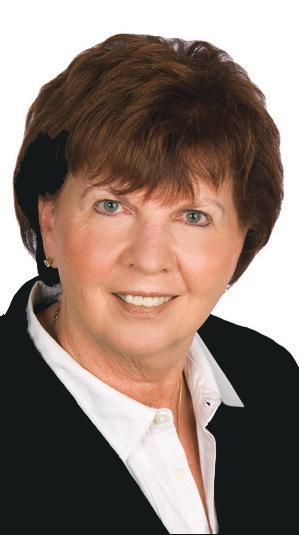
Bidding wars







From left, Dennis Picotte and Father Thomas Dufner take part in an auction during the annual Epiphany Christ is Light Gala Dec. 3 at Epiphany in Coon Rapids, where Father Dufner serves as pastor. This year’s event raised more than $200,000 for tuition assistance at Epiphany Catholic School. “Our annual Gala is designed to bring our community together, strengthen relationships and provide financial assistance to our students in need,” Ann Coon, principal of the school, wrote in an email to The Catholic Spirit. “This year’s event exceeded our expectations in all three areas. The evening was a blessing beyond measure!” Behind Picotte and Father Dufner is a member of O’Sullivan Auctioneers, which ran the auction. Picotte is a parishioner of Epiphany and co-owner of Picotte Custom Homes along with his son, Ryan, who also was at the gala. Picotte Custom Homes was one of three presenting sponsors at the gala, along with Finishing Touch Painters (Ryan Picotte) and Greater Midwest Realty (Melissa Johnson, Dennis’ daughter).
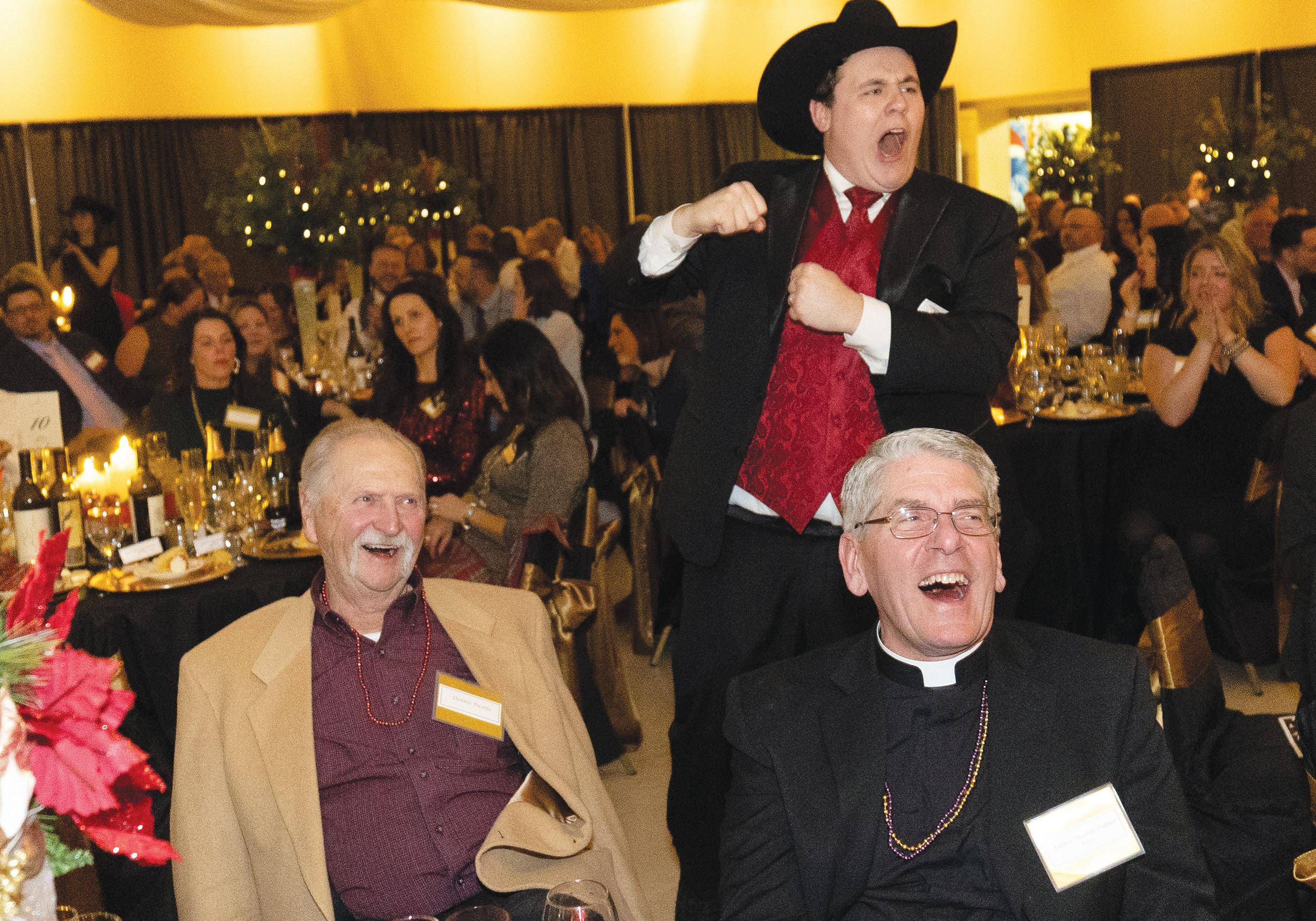
4 • THE CATHOLIC SPIRIT DECEMBER 8, 2022
LIFE
LOCAL SLICE
Cell: (651) 470-0675 Kathy Kueppers kathykueppers.realtor@gmail.com From condos to castles, performance exceeds promise Advertise your real estate business in The Catholic Spirit. Call 651.291.4444 4 • The Catholic Spirit LOCAL SLICEof LIFE These real estate agents can help you find your Home Peggy Langeslay plangeslay@cbburnet.com Now is the best time to sell your home. Realtor/Broker Now is the best time to sell your home. With historically Low Inventory of Homes for Sale, your home may be worth more than you realize. Call Today for a Free Home Value. Buyers are Waiting! (Bloomington and Eagan are most needed) 5BR/4BA 3400+ sq. ft 2 story in Blaine. $359,900. 4BR/ 4BA 4200+ sq. ft story in Plymouth $539,000. 4BR/2BA 1800+ sq. ft 4 level split in Maple Grove $230,000. Home SELLER Seminar March 9th 7-8pm OR March 25th 9-10am, The Sue Johnson Team 651-690-8591 Call Today for all Your Buying and Selling Needs 612-987-8200 jjohanning@edinarealty.com If you would like to advertise on this page, please call The Catholic Spirit Advertising Department at 651-291-4444 Top notch large or too 612-803-4301. Office 651-452-3047 Kathy Kueppers Cell: (651) 470-0675 kathykueppers.realtor@gmail.com From condos to castles, performance exceeds promise Kathy Kueppers REALTOR®, CRS Owner/Broker Cell:(651) 470-0675 Office:(651) 365-0230 kathykueppers@realtyexecutives.com CHARMING 2 story, hardwood floors, natural woodwork, updated kitchen, master suite, large yard. Close to St Joseph’s school, parks, easy access to shopping, West St Paul $189,900. The Sue Johnson Team is now Good Company Realty Group Call us today! 651-329-1264 GoodCompanyRealtyGroup.com Looking for your first home? Down-sizing for any reason? Sue Johnson and the Good Company Realty Group can help. Call 651-329-1264 or e-mail: suejohnson@goodcorealty.com Decades of helping families just like yours have a great real estate experience. Providing exceptional value is the cornerstone of my service to you! How can I help you today? Providing exceptional value is the cornerstone of my service to you! How can I help you today? Providing exceptional value is the cornerstone of my service to you! How can I help you today? JOE CASSIDY 612.803.4301 joecassidy@kw.com www.joecassidyhomes.com Realtor Providing exceptional value is the cornerstone of my service to you! How can I help you today? www.joecassidyhomes.kw.com DAVE HRBACEK | THE CATHOLIC SPIRIT
The faithful begin to pray, reflect on Archbishop Hebda’s pastoral letter
By Joe Ruff The Catholic Spirit
Festus Ejifor of St. Peter Claver in Minneapolis is among parishioners in the Archdiocese of St. Paul and Minneapolis expressing gratitude for Archbishop Bernard Hebda’s post-synodal pastoral letter.
“It’s uplifting,” Ejifor said Nov. 28, just over a week after the Nov. 19-20 release — on the feast of Christ the King — of “You Will be My Witnesses: Gathered and Sent from the Upper Room.”
“I know how much time it took to narrow down to three components we can face squarely” as a local Church, Ejifor said of the three-year Archdiocesan Synod process led by Archbishop Hebda of gathering information, sharing Church teaching and praying for the Holy Spirit’s guidance.
Those components, Ejifor said, are clearly stated in the pastoral letter: 1) Forming parishes that are in the service of evangelization 2) Forming missionary disciples who know Jesus’ love and respond to his call and 3) Forming youth and young adults in and for a Church that is always young.
Ejifor was among nearly 500 people from across the archdiocese who gathered for three days in June for the Archdiocesan Synod Assembly in St. Paul to prayerfully consider and vote on 40 propositions for living out those three components. Archbishop Hebda took the voting, and all that had passed before it, into account as he wrote the letter that sets the stage for a three-year pastoral plan for the archdiocese.
The letter can be read at archspm org/synodletter
Members of his parish, said Ejifor, a member of the parish council, continue to study the letter as they pray for the Holy Spirit’s guidance in responding.
Pastors across the archdiocese helped introduce their congregations to the letter at weekend Masses, some holding up commemorative copies and many showing an introductory video.
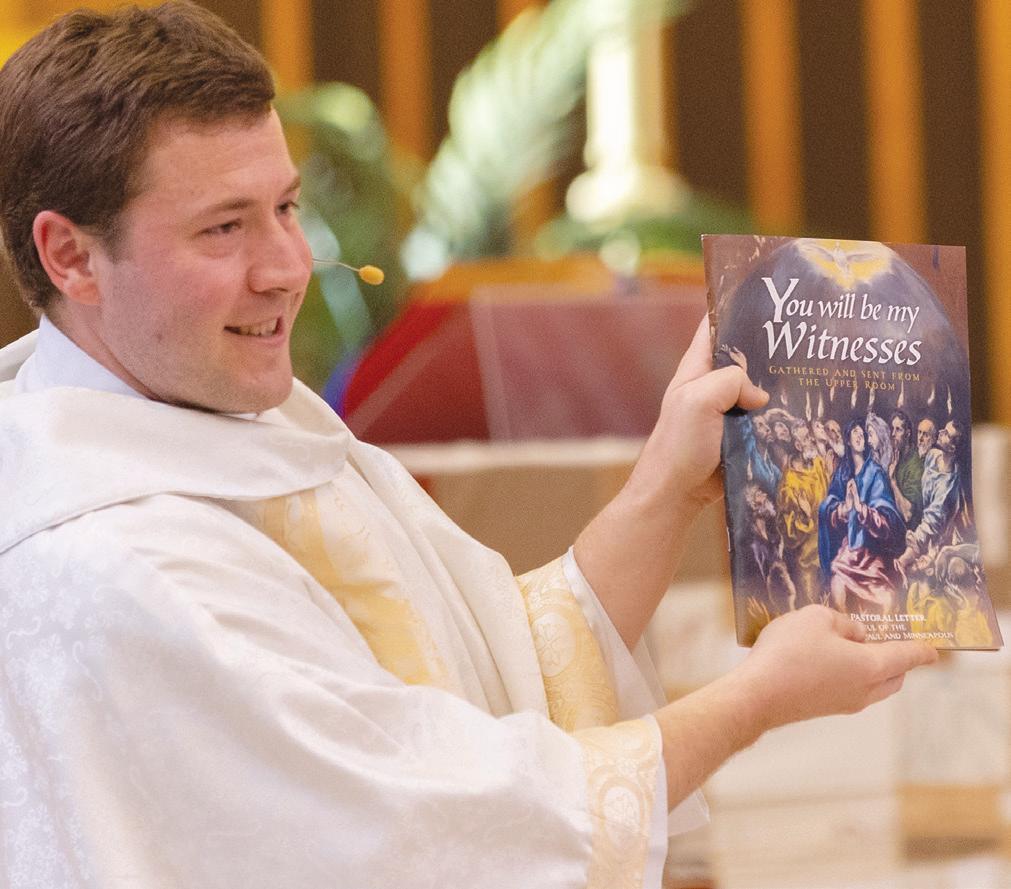
“It’s going to have a great effect on our local archdiocese, and not only our archdiocese, but each one of us,” said Father Peter Ly, pastor of Presentation in Maplewood, as he encouraged parishioners at Mass Nov. 20 to use a QR code in the bulletin to easily access the letter.
“The archbishop has a plan for each of us to strengthen our community — the archdiocese and here at Presentation,” Father Ly said.
EXCERPTS FROM THE PASTORAL LETTER
“When I arrived seven and a half years ago as the temporary Apostolic Administrator, our local Church was undergoing a tremendous trial, due principally to the scourge of clergy sexual abuse. I am grateful that we now find ourselves in a very different place, due to the dedication, sacrifices, courage, prayers, and collaboration of so many survivors of abuse and other members of the laity, clergy and Archdiocesan staff. Yet I also realize that for some, despite the good work that has occurred, these days are still difficult due to the long-term effects of abuse.
“For those experiencing the deep burdens of having been abused or of having a loved one suffer abuse, and for those scandalized as a result of the failure of the Archdiocese to protect the vulnerable, I am sorry for the actions and inactions that caused so much pain and ask for your forgiveness. I pledge that our efforts to protect the young and vulnerable and to support those who have been wounded will continue, even as we now expand our focus to include other aspects of renewal.”
The Acts of the Apostles: A growing Church “And what is the result of his (Peter’s) witness? The fire of faith spreads: ‘Those who accepted his message were baptized, and about three thousand persons were added that day’ (Acts 2:41). This becomes a theme for Luke as he writes the first history of the Church:
“‘And every day the Lord added to their number those who were being saved’ (Acts 2:47).
The pastoral letter places special emphasis on parish Synod Evangelization Teams that in successive years will help establish parish-based small groups, find ways to teach about the Mass while enhancing liturgies and focusing on the Eucharist, and assist parents in forming their children in the faith. It also promises support in concrete ways from the archdiocese, including an Office of Synod Evangelization, Vicars of Evangelization and a Vicar of Charisms.
Shaped by the mysteries of the Upper Room, where Jesus washed the feet of the Apostles, instituted the Eucharist and where the Holy Spirit descended on the Apostles at Pentecost, the archbishop’s letter encourages people to live in faith, service, love and powerful witness to the Spirit. It encourages walking with one another in synodality, or respectful and faithful accompaniment, an effort sought by Pope Francis for the Church around the world.
“It’s my hope people will read this pastoral letter,” Brandy Wentzler, 47, a member of St. John the Baptist in Vermillion, said of the archbishop’s nearly 60page letter, which she read over two days. “Where
“‘Yet more than ever, believers in the Lord, great numbers of men and women, were added to them’ (Acts 5:14).
“See the contrast between the Church of the Acts of the Apostles and the Church of today: a Church where more than six times as many adults are leaving the Church in the United States than those who are entering. Only a culture of witness can turn the tide of decline that we are seeing in many areas of the Church today. But this bold witness is not a power that we can give ourselves. It can only be received when the Holy Spirit comes to us.”
Plans for a future of hope
“The experience of being your shepherd these past years has deepened my confidence that Christ Our King has wonderful plans in mind for us in the Archdiocese of St. Paul and Minneapolis, plans to give us a ‘future of hope’ (Jer 29:11).
“I trust that the Holy Spirit has spoken through you, the faithful of this local Church, throughout the Synod process, and that the vision outlined in this pastoral letter is an important first piece of the Spirit’s plan for us at this juncture in our history to fulfill the Great Commission that is emblazoned on the front of our Cathedral: ‘Go, therefore, and make disciples of all nations’ (Mt 28:19). I am excited to imagine the abundant fruitfulness that will result when our parishes intentionally integrate all three mysteries of the Upper Room.
“For those of you who had been hoping that other priorities would have been discerned and chosen for these first three years, please be assured of a special remembrance in my prayers. I will be asking the Master of the Harvest to bless you with both patience and perseverance rather than discouragement and desolation. As reflected at the Synod Assembly, the needs of our Church are vast. This pastoral letter calls us to take a few important steps together toward addressing some of these needs. My hope is that our efforts together in the Upper Room will in time
Archbishop Hebda goes into his imagery of the Upper Room, that’s where I really felt stirrings in my heart.”
The archbishop’s apology high in the letter for Church wrongdoing in the clergy sexual abuse crisis and its commitment to safe environments going forward was “moving in a meaningful way,” Wentzler said.
“It’s a beautiful demonstration of humility,” Wentzler said. “It’s what all of us need to do” in our daily lives, she said.
The archbishop clearly follows the lead of concerns and conversations at the Synod Assembly, said Wentzler, who, like Ejifor, was among the delegates. “For him to see all we were talking about in the Synod and wrap it into the Upper Room, it was truly, divinely inspired,” she said.
Ian Handrigan, 18, a member of Gitchitwaa Kateri and a senior at DeLaSalle High School, both in Minneapolis, said he was touched by the letter’s emphasis on service to others.
“The washing of the feet really did strike me the most,” he said Nov. 20. “Especially how much it talked about serving others and laying down ourselves when possible.”
Handrigan said he was on a mission trip in St. Louis in June when the leaders washed the feet of the young volunteers. “I never felt the Spirit like that before,” he said. “My sense of self dissolved. It was just love. There were no words that needed to be said. It was pure love, from everyone.”
Also a member of the Synod Assembly, Handrigan said he continues to be concerned about his generation’s denial of God, and the Church’s ability to reach those who need to hear the good news.
“The letter moves us in the right direction,” he said. “I think the archbishop outlined a wonderful path to follow (with) foot-washing, the Eucharist and spreading the word.”
Kathryn Lien, 69, played the organ and piano at the Mass at Presentation, where the video was played. A member of St. Mary of the Lake in White Bear Lake, Lien said she resonated with the call for the laity to take up evangelization.
“I was very heartened by his invitation as coworkers in the field, and collaborators,” Lien said, adding that she looked forward to studying the letter. “Anything we can do to flatten the hierarchical structures will help the Church in its work of bringing Jesus to the world. Everybody has a unique role to play.”
give us the common experience and tools that will be necessary for addressing the remaining needs, while remaining docile to the Holy Spirit.
“Sisters and brothers, the health of this local Church depends upon your willingness to share in humility the gifts with which you have been so richly blessed. Please join me in asking the Holy Spirit to reveal to each one of us how we are uniquely equipped to serve the renewal of our Archdiocese in a time such as this. If you are being asked to embrace new ministries or new challenges, do not be afraid. The Lord is never outdone in generosity.
“Only God knows the great surprises he has in store for us as we continue to walk together, pray together, listen together, discern together, and now respond together to the commission that Jesus first gave his Apostles: ‘You will be my witnesses’ (Acts 1:8)! Through the intercession of Our Lady of the Cenacle, and full of the hope that resides in her Immaculate Heart, let us call upon the Holy Spirit to send us forth:
“Holy Spirit, renew your wonders in our time, as though in a new Pentecost, and grant that this Archdiocese, united in prayer around Mary, the Mother of Jesus, and guided by St. Peter, may spread the Kingdom of the divine Savior, a Kingdom of truth, of justice, of love, and of peace. Amen.
Saint Paul, our great missionary patron, pray for us!
From the Cathedral of Saint Paul on the Solemnity of Christ the King, 20 November 2022
The Most Reverend Bernard A. Hebda Archbishop of St. Paul and Minneapolis”
DECEMBER 8, 2022 LOCAL THE CATHOLIC SPIRIT • 5
DAVE HRBACEK | THE CATHOLIC SPIRIT
Father James Peterson, pastor of Immaculate Conception in Columbia Heights, holds up a commemorative copy of Archbishop Bernard Hebda’s post-synodal pastoral letter “You Will be My Witnesses: Gathered and Sent from the Upper Room,” for the congregation to see at the end of Mass Nov. 20.
An experience of unprecedented difficulty meriting an apology
Northeast Minneapolis school greets newly arrived Ecuadorians, Ukrainians
By Joe Ruff The Catholic Spirit
About five years ago, St. John Paul II Catholic School in northeast Minneapolis was challenged when an eighth grader and his family, newly arrived in the U.S. from Ecuador, came knocking in hopes of completing his elementary school education.
“We weren’t sure how to handle that,” said Tricia Menzhuber, principal. “We were just like … welcome!”
Not having journeyed with the family up to that point — and the young man in a challenging grade with a lot to learn even if English as a second language was not an issue — Menzhuber and others at the school did what it took to prepare him for high school. They succeeded, and he went on to do well at Columbia Heights High School in Columbia Heights.
Other families soon followed, drawn to the area by relatives and friends, welcomed by nearby Sts. Cyril and Methodius parish and others in the community. As families arrived, three students one year joined the school straight from Ecuador. Another year, eight.
Now, English is the second language of 76% of the 177 students at the kindergarten through eighth grade school. Nearly every classroom has newly arrived immigrants in the mix, including four refugees from conflict-torn Ukraine who joined the school this fall, Menzhuber said.
St. John Paul II has served immigrant families since its founding in the 1800s, Menzhuber said. “The difference now has been we are making a name for ourselves for families just arriving.”
With a goal of properly receiving newly arrived immigrants and keeping them with the rest of their classmates as much as possible, school officials spent a lot of time last school year and over the summer setting up a support system that provides students extra help in areas where they need it, while keeping up with the mainstream classroom, she said.
“It was complex. We couldn’t do it alone,”
Menzhuber said, referring in part to a U.S. Department of Education guidebook titled the Newcomer Toolkit, which stresses welcoming schools and classrooms, providing cultural and linguistic integration and education, developing newcomers’ social and emotional skills and partnering with their parents.
St. John Paul II launched its Newcomer Experience this fall. It includes a dedicated English language teacher, Judi Mikolai, a social studies course on Minnesota for middle schoolers in Spanish, and math tutoring in primary and native languages. Designed as a three-year experience, the program recognizes individual progress as it encourages gradual inclusion for all students into the regular classroom and full inclusion after the third year.
Students from countries such as Ecuador often have unique needs, such as understanding what winter is and the need for a warm coat. Aid to all students includes a City Connects program helping students meet material, social and academic needs, led by Silvia Ochoa.

Celebrate the Christmas Season at the Cathedral of Saint
Paul
STRENGTH IN COMMUNITY
St. John Paul II Catholic School in northeast Minneapolis is part of Ascension Catholic Academy, a consortium of elementary schools serving diverse populations including Ascension Catholic School in north Minneapolis, St. Pascal Regional Catholic School on St. Paul’s east side and St. Peter Claver Catholic School in St. Paul’s Rondo area.
JPII, Ascension and St. Peter Claver are also part of a nineschool Drexel Mission Schools Initiative of the Archdiocese of St. Paul and Minneapolis’ Office for the Mission of Catholic Education, under its 2019 Roadmap for Excellence in Catholic Education. Drexel Mission Schools must have at least 100 students, 50 percent of whom are students of color and 50 percent of whom are in a free or reduced lunch program.
Yen Fasano, associate director of Catholic Schools working with the Drexel Mission Schools Initiative, said Catholic schools welcome all families. SJPII’s program appears to be unique to the school and is another way to recognize that families need a home and trusted partners. “It will be neat to see the gifts these students bring into these schools,” she said, as they matriculate into the classroom and school community.
This program is particularly helpful to newly arrived immigrants because it offers daily emotional-social support, both with the students’ homerooms and Ochoa, Menzhuber said.
“We do a lot of sharing,” Ochoa said. “How they are feeling, who is there to support them. I teach them to express their feelings, to ask for help in class. If they are not feeling well, to request a nurse.”
Families also want to know what is going on culturally, such as the St. Paul Winter Carnival, what sledding and tubing are, Ochoa said.
“This is a great program,” she said. “We are adjusting as we go along.”
Christmas 2022 at The Cathedral of Saint Paul
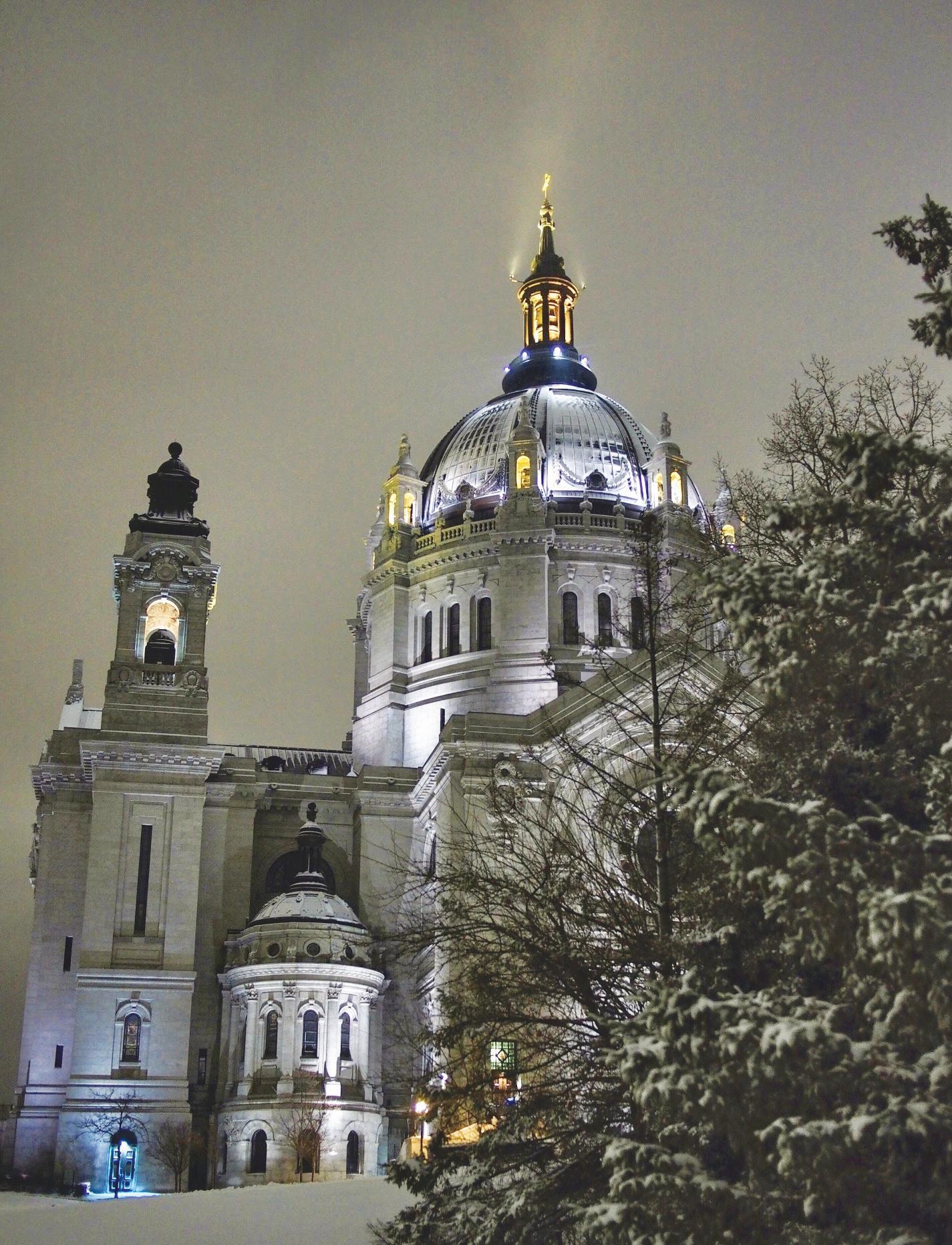
Pre-Christmas Concert
Thursday, December 15 at 7:30 p.m. Steven C. Anderson (piano) | with St. Cecilia Children’s Choir Pre-Christmas Confessions December 21-23
Wednesday | Thursday | Friday 3:30-5:00 p.m.
Saturday, December 24 - Christmas Eve Confessions: 10:00-11:30 a.m. (up to six priests present) Christmas Eve Mass at 4:00 p.m. (with Children’s Choir)
Sunday, December 25 - Christmas Day Midnight Mass - Most Rev. Bernard A. Hebda, Celebrant (11:15 p.m. Carol Prelude with Cathedral Choir) 10:00 a.m. (with Cathedral Schola) 8:00 a.m. | 12:00 Noon (with Organ and Cantor) (9:00 a.m. Mass at the Saint Vincent de Paul Campus)
Solemnity of Mary, Mother of God
Saturday, December 31 | 5:15 p.m. (Anticipatory)
Sunday, January 1 | Masses at 8:00 a.m. | 10:00 a.m. (with Choir) | 12:00 Noon
Church Closes at 1:00 p.m. | No 5:00 p.m. Mass on January 1
National Shrine of the Apostle Paul

239 Selby Avenue, Saint Paul MN 55102 • 651.228.1766 • www.cathedralsaintpaul.org

6 • THE CATHOLIC SPIRIT LOCAL DECEMBER 8, 2022
I proclaim to you good news of great joy that will be for all people. Luke 2:10
COURTESY TRICIA MENZHUBER
Fourth and fifth grade boys, a mix of students newly arrived in the United States and their classmates, take a moment for a photo during recess Nov. 29 at St. John Paul II Catholic School in Minneapolis.
Bishop Barron disappointed by Senate passage of Respect for Marriage Act
By Julie Asher Catholic News Service
The chairman of the U.S. bishops’ Committee on Laity, Marriage, Family Life and Youth said he was “gravely disappointed” by the U.S. Senate’s passage of the Respect for Marriage Act.
Bishop Robert Barron of WinonaRochester said Dec. 1 that the measure “fails to include clear, comprehensive and affirmative conscience protections for religious organizations and individuals who uphold the sanctity of traditional marriage that are needed.”
The Senate passed the bill Nov. 29 in a 61-36 vote. The U.S. House of Representatives approved the measure in July, but must vote again on the bill as amended by the Senate. House passage is expected, and President Joe Biden has said he will sign the bill into law.
Decades of social and legal developments “have torn sexuality, childbearing, and marriage from each other in the public consciousness,” Bishop Barron said in a statement released by the U.S. Conference of Catholic Bishops.
“Much of society has lost sight of the purpose of marriage and now equates it with adults’ companionship,” he said.
“We affirm our respect for the dignity of all engaged in this debate and acknowledge differing perspectives in our civil society,” Bishop Barron added, “but the impact of this bill will only contribute to the diminishment of the sacredness and integrity of marriage in our society.”
Ahead of the Senate vote, Bishop Barron joined Cardinal Timothy Dolan of New York, chairman of the USCCB’s Committee for Religious Liberty, in reiterating the bishops’ “firm opposition” to the “misnamed” measure legalizing same-sex marriage.

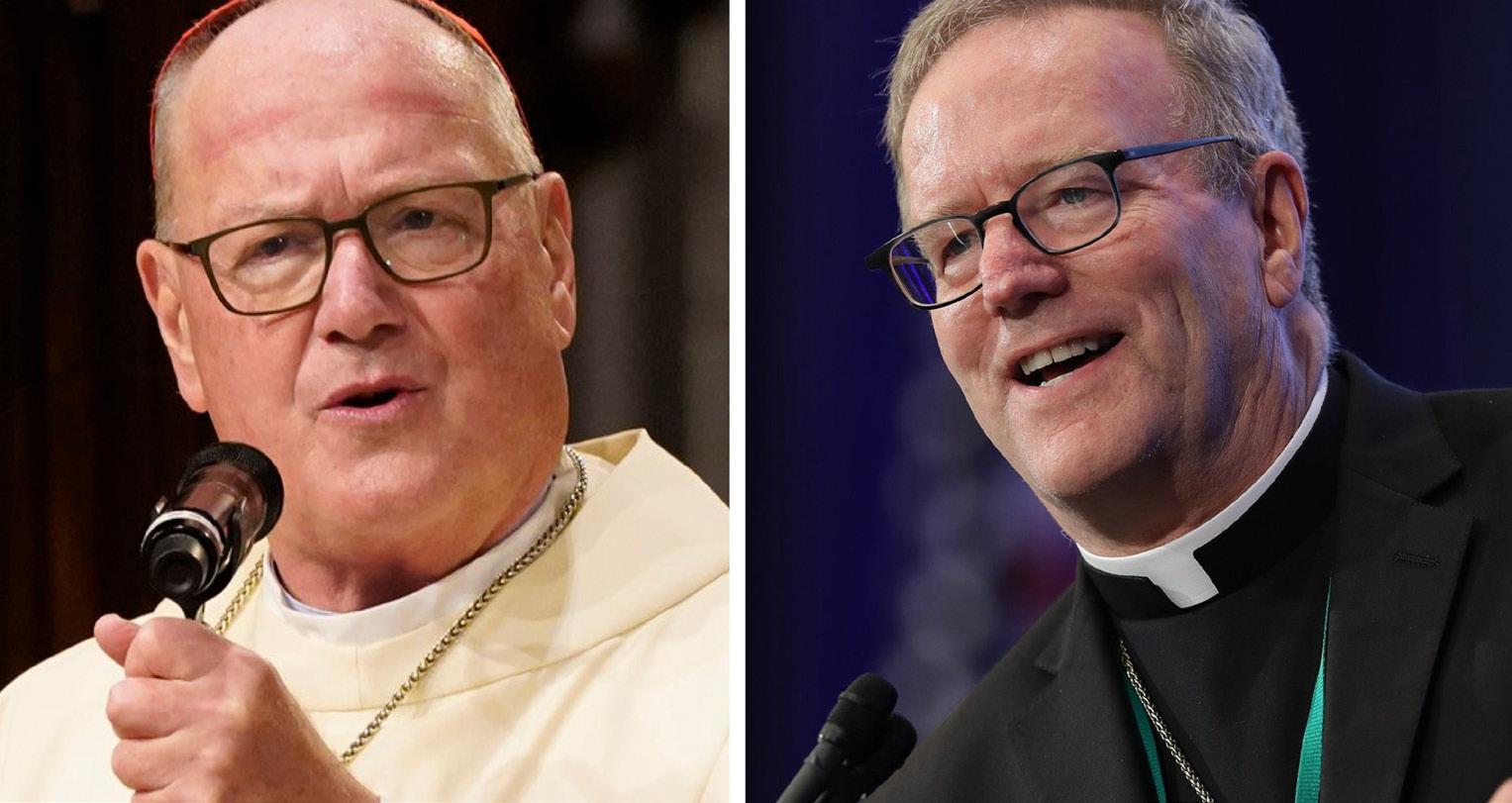
In a Nov. 23 joint letter to all members
of Congress, the chairmen said they were writing “to implore Congress to reverse course” on H.R. 8404, also known as RMA.The letter said the bishops’ opposition to the Respect for Marriage Act “by no means condones any hostility toward anyone who experiences samesex attraction.”
“Catholic teaching on marriage is inseparable from Catholic teaching on the inherent dignity and worth of every human being. To attack one is to attack the other. Congress must have the courage to defend both,” the letter said.
The bill codifies the Supreme Court’s 2015 ruling in Obergefell v. Hodges that found a constitutional right to samesex marriage. It also codifies interracial marriage. In a Nov. 17 statement after the bill advanced in the Senate, Cardinal Dolan called it “a bad deal for the many courageous Americans of faith and no faith who continue to believe and uphold the truth about marriage in the public square today.”
The text of their joint letter and a lengthy detailed analysis by the USCCB on how the bill, if it becomes law, could
endanger religious liberty can be found at bit ly/3H22Z74
“First, the bill will be used to argue that the government has a compelling interest in forcing religious organizations and individuals to treat same-sex civil marriages as valid,” the analysis said.
An amendment to the bill says it “protects all religious liberty and conscience protections available under the Constitution or federal law, including but not limited to the Religious Freedom Restoration Act, and prevents this bill from being used to diminish or repeal any such protection.”
It also “confirms that nonprofit religious organizations will not be required to provide any services, facilities, or goods for the solemnization or celebration of a marriage.”
The amendment was worked out by a bipartisan group of negotiators — headed by Sens. Tammy Baldwin, D-Wis., and Susan Collins, R-Maine — who had asked the Senate for more time to consider “an amendment designed to respond to the concerns of GOP lawmakers who feared
the legislation could put churches and other religious institutions at legal risk if Congress voted to codify same-sex marriage rights.” With the amendment, 12 Republicans joined every Democrat in supporting the marriage bill.
But the USCCB analysis said that even with the amendment, under the bill “religious objectors are likelier to be denied exemptions under the First Amendment and RFRA in cases where they would have prevailed but for the passage of RMA.” The measure “would have a ripple effect that hurts religious freedom in every context where conflicts with same-sex marriage arise, not just in the context of compliance with RMA itself,” the analysis said.
“Employment decisions, employees’ spousal benefits, eligibility for grants or contracts, accreditation, tax exemptions — it runs the full gamut, even in religious liberty conflicts arising out of state or local laws,” it added.
“Unfortunately, a number of religious groups and senators are asserting that the amended text of RMA sufficiently protects religious freedom,” Cardinal Dolan and Bishop Barron said in their letter. They added that from the perspective of the USCCB, “whose bishops’ ministries comprise the largest nongovernmental provider of social services” in the U.S., the provisions of the bill “that relate to religious liberty are insufficient.”
“The amended act will put the ministries of the Catholic Church, people of faith and other Americans who uphold a traditional meaning of marriage at greater risk of government discrimination,” the two prelates said.
“This bill is needless and harmful and must be voted down,” they said. “At the same time, Congress, and our nation as a whole, must resolve to foster a culture where every individual, as a child of God, is treated with respect and compassion.”
Archbishop Wester’s pastoral letter boosts nuclear disarmament efforts
By Dennis Sadowski Catholic News Service
Efforts to achieve nuclear disarmament got a boost in 2022 with one archbishop calling for widespread conversations on ridding the planet of the threat such weapons pose — and peace advocates taking up his message with new enthusiasm.
The pastoral letter released by Archbishop John Wester of Santa Fe, New Mexico, in January serves as an invitation for serious conversations. The document, “Living in the Light of Christ’s Peace: A Conversation Toward Nuclear Disarmament,” is the most recent and perhaps most heartfelt from a U.S. bishop seeking to end the nuclear arms race.
In it, Archbishop Wester explained that his message is rooted in St. John XXIII’s 1963 encyclical “Pacem in Terris” (“Peace on Earth”) and the teaching of Pope Francis, who has repeatedly said the possession of nuclear weapons is immoral because of their threat to human life. The archbishop calls for conversations to begin in his own archdiocese, the home of two national laboratories where nuclear weapon development continues and an Air Force base with one of the largest repositories of U.S. nuclear weapons.
The pastoral letter’s message took on added significance with the start of Russia’s war on Ukraine in February and subsequent threats by Russian President Vladimir Putin to consider using nuclear weapons to reinforce his illicit claims on the Ukrainian regions.
Peacemakers and religious leaders, including Archbishop Paul Etienne of Seattle, expressed concern at various points throughout the year about the “grave danger” of nuclear war. Their earnest pleas for peace have included calls for ending the “irresponsible threats,” appeals to President Joe Biden to not respond in kind, and invitations to individuals to pray, study and act to prevent the possibility of a catastrophic nuclear exchange.
Programs at Fordham University, Georgetown University and other institutions have focused on the need to reduce nuclear stockpiles and the importance of diplomacy to achieve that goal.
Joining the call for eliminating nuclear weapons, Pax Christi USA renewed its Bread Not Stones campaign in the short term to call attention to mounting military spending, particularly on nuclear weapons systems on land and at sea.
Nuclear disarmament efforts sustained a setback, however, when the 10th Review Conference for the Treaty on the Non-Proliferation of Nuclear Weapons at the U.N. in New York in August failed to issue a consensus document on how to move forward.
JOHN WESTER
Archbishop Wester has taken his message around the country, hoping to build the conversations he believes the country — and the world — must begin. He addressed his concern during Pax Christi USA’s 50th anniversary national conference in August, at the annual United Nations prayer service in New York in September, in a reflection marking the 60th anniversary of the Cuban Missile Crisis in October, as well as at liturgies and events in his archdiocese.
He also will take his message to Rome in December when he addresses a conference on Pope Francis’ efforts to promote Gospel nonviolence.
Archbishop Wester has said he is concerned that after decades in which arms control treaties led to reductions in nuclear armaments, a new arms race is already underway as the U.S. and Russia, the world’s primary nuclear powers, develop new weapons systems.
Russia blocked agreement on a final document late Aug. 26, the review conference’s final day, by objecting to paragraphs raising concerns about military activity around the Zaporizhzhia nuclear power plant in Ukraine. The failure came despite the efforts of the Holy See, disarmament advocates and non-nuclear nations.
Catholic advocates said afterward they would work globally to build support for the treaty’s provision that parties to it “pursue negotiations in good faith on effective measures relating to cessation of the nuclear arms race at an early date and to nuclear disarmament.”
They also said they would undertake grassroots organizing and education to build momentum around the Treaty on the Prohibition of Nuclear Weapons, which went into force in January 2021. The Holy See was the first entity to sign and ratify the ban treaty.
DECEMBER 8, 2022 THE CATHOLIC SPIRIT • 7
NATION+WORLD
CNS | GREGORY A. SHEMITZ AND BOB ROLLER
New York Cardinal Timothy Dolan, left, and Bishop Robert Barron of Winona-Rochester.
ARCHBISHOP
No heat, no electricity: Bishop warns of new wave of Ukrainian refugees
By Jonathan Luxmoore Catholic News Service

A Ukrainian bishop warned huge numbers of citizens could flee to Western countries during winter, and he appealed for continued international support in the face of a threatened “humanitarian catastrophe.”
“When Moscow began this war last February, millions headed for the borders — if it now destroys our energy supplies, there’ll be a similar wave of refugees,” said Auxiliary Bishop Jan Sobilo of Kharkiv-Zaporizhzhia.
“If everyone leaves, our own soldiers will ask who they’re supposed to be defending. That’s why we’re requesting continued help. This is a war not just for Ukraine’s independence, but to hold back a whole civilization of evil.”
Russian missile and drone attacks on Ukraine’s critical infrastructure continued into December.
In a Dec. 2 interview with Catholic News Service, Bishop Sobilo said he was working with city officials to organize “heating points” in his church and residence so people could come to warm up.


However, he added that the parish’s one small generator now needed repairs, and he said local bakeries and food companies now lacked oil and diesel to maintain production.
“We face a huge humanitarian catastrophe — people in multi-story apartment blocks will have no chance of surviving when there’s no water, electricity or gas, and no lighting, lifts or toilets,” Bishop Sobilo told CNS.
“Most are already exhausted with this war — and with a cold winter now beginning, many, especially those with children, are getting ready to leave. Power is also being switched off continually in Lviv and other western towns, so a huge wave of refugees will head for Poland and other countries.”
Aid organizations have highlighted worsening conditions in Ukraine’s towns and cities, where municipal rooms and tents have been equipped to provide heat, food, water and electricity to charge mobile phones.
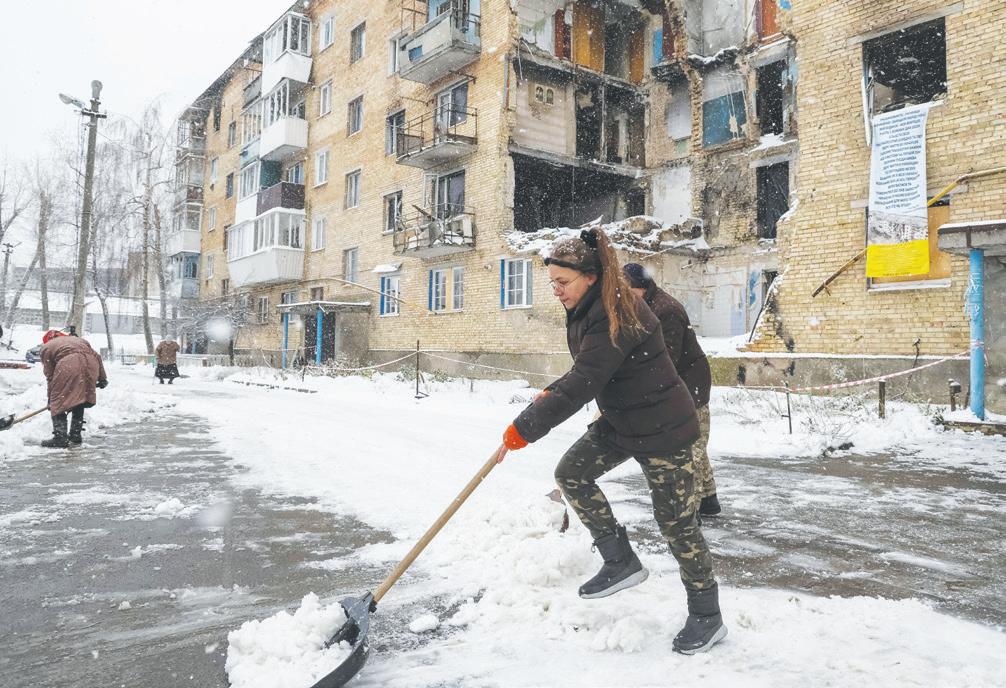
Meeting in Romania Nov. 29, NATO ministers pledged help in restoring Ukraine’s power grids, as well as further arms supplies.
However, the director of Caritas in Poland, Father Marcin Izycki, confirmed Nov. 30 that church-funded reception centers were being readied for a new influx of refugees. Meanwhile, a Caritas-Spes director in Kharkiv, Father Wojciech Stasiewicz, told Vatican Radio Nov. 26 lack of electricity and heat had prevented children from attending online classes in city basements. He said the
greatest need was for generators, power banks, wood stoves, medicines and warm clothes.
In Kyiv, Mayor Vitali Klitschko said citizens were having to adjust to about three hours of electricity per day, with little street lighting.
The project manager of Caritas-Spes, Olena Noha, told Austria’s Kathpress agency Nov. 29 people were being “worn down” by “darkness and constant fear of missiles,” with food now also running short in surrounding villages.
She added that Russian-controlled internet sites were encouraging Ukrainians to blame their government for the crisis, with claims “there is still electricity in the city center and among rich people.”
Bishop Sobilo told CNS his church in besieged Zaporizhzhia was still providing daily Masses, but church activities had ceased in Russian-occupied areas, where a third Ukrainian Catholic priest, Father Oleksander Bogomazy, was reported abducted by Russian troops Dec. 1 from his parish at Melitopol. In November, two other priests were taken by Russian troops. “The Russians aim to destroy as much as possible, wherever they can, so life becomes impossible,” the bishop said.
Meanwhile, Ukrainian Archbishop Sviatoslav Shevchuk of Kyiv-Halych appealed to parents and teachers not to neglect the upbringing of youngsters. He said many parents faced “ever more dramatic repression” in occupied areas for failing to send their children to Russian schools.
Bishop Sobilo told CNS he planned to visit Ukrainian
UKRAINE TO INVESTIGATE RUSSIA-AFFILIATED CHURCH
The Ukrainian government said it would sanction members of the Ukrainian Orthodox Church affiliated with the Moscow Patriarchate. After a Dec. 1 meeting of the National Security and Defense Council, Ukrainian President Volodymyr Zelenskyy said the government also would review if the church met the legal criteria for use of one of the main shrines of Ukraine, the KyivPechersk Lavra, or Kyiv Monastery of the Caves.
“Unfortunately, even Russian terror and full-scale war did not convince some figures that it is worth overcoming the temptation of evil. Well, we have to create conditions where no actors dependent on the aggressor state will have an opportunity to manipulate Ukrainians and weaken Ukraine from within,” Zelenskyy said.
The security council instructed the Ukrainian parliament to draft a law making it impossible for religious organizations affiliated with centers of influence in Russia to operate in Ukraine, reported Religious Information Service of Ukraine.
In addition, the State Service for Ethnopolitics and Freedom of Conscience was told to ensure the religious examination of the management statute of the Ukrainian Orthodox Church for the presence of a church-canonical connection with the Moscow Patriarchate and, if necessary, to take measures provided for by law.
As the war began and, especially, as it progressed and evidence of war crimes grew, Metropolitan Onufry of Kyiv, head of the Ukrainian Orthodox Church tied to the Moscow Patriarchate, increasingly distanced himself from Moscow and assured his Ukrainian faithful that the church was with them. But questions remain about how committed Metropolitan Onufry’s clergy are to defending Ukraine’s right to exist.
— Catholic News Service


front-line positions to ascertain the needs of local civilians “now that frost and freezing temperatures have arrived.”
“We’re grateful to Western Catholics for help we’ve received over these nine months — especially in prayer, but also through material support enabling us to survive,” the bishop added.
“We’re now again asking Catholics, especially in the U.S., not to forget about this war, but to remain in solidarity since we have to keep going until the spring, ensuring enough people stay to keep our communities alive and our churches open.”
Most of our subscribers receive The Catholic Spirit (for free!) through their parishes. If you don’t receive The Catholic Spirit at home and want to, contact your parish office.
CHRISTMAS EVE MASS 2:00pm*, 5:00pm*, 7:30pm, and Midnight*
CHRISTMAS DAY MASS 7:30am, 9:30am*, 11:30am, and 5:00pm
8 • THE CATHOLIC SPIRIT NATION+WORLD DECEMBER 8, 2022
REVIEWS
WHY IS THE CATHOLIC
MOVIE
TheCatholicSpirit.com
SPIRIT IN MY MAILBOX?
January 27, 2022 Newspaper of the Archdiocese of Saint Paul Minneapolis MCC’S LEGISLATIVE PRIORITIES 5A STUDENT BAPTISMS 7A GERMAN ABUSE 8A BEARDED BROTHER TEACHES TEENS CATHOLIC CENTURY LITTLE SISTERS’ PANDEMIC PERSEVERANCE 16A ‘Follow Christ’ At Jan. 25 ordination, Bishop Williams encourages faithful to share Gospel — B SECTION Bishop Joseph Williams addresses congregation near the close ordination Mass at Cathedral Paul. HRBACEK SPIRIT Or, subscribe directly for $29.95/year: TheCatholicSpirit.com or call 651-291-4444. Join Us for Christmas THE BASILICA OF SAINT MARY
Avenue at North Sixteenth Street,
612.333.1381
Hennepin
Minneapolis
*Livestream at facebook.com/BasilicaMpls and www.mary.org
CNS | GLEB GARANICH, REUTERS
Local resident Tetiana Reznychenko shovels snow Nov. 19 near her destroyed building, which has no electricity, heat or water, in Horenka, Ukraine.
HEADLINES
u Supreme Court appears ready to support web designer in free speech case. In a case examining the scope of free speech protected by the First Amendment, the Supreme Court Dec. 5 ultimately seemed to favor a broad view of free speech. And in this case, the speech involved what a graphic designer who creates websites should not have to say. Colorado designer Lorie Smith, who runs a web design company called 303 Creative, has said she should not be required to create wedding websites for same-sex couples based on her Christian beliefs about marriage. Colorado state law forbids businesses from discriminating based on sexual orientation. Smith contends her First Amendment right to free speech exempts her from the law. But she lost her case in the lower court when the 10th U.S. Circuit Court of Appeals ruled that the state has a compelling interest to protect its citizens "from the harms of discrimination." In addressing the Supreme Court, Kristen Waggoner, the Alliance Defending Freedom attorney representing Smith, argued that companies whose work centers around expression have First Amendment protections from being compelled to say things that go against their personal beliefs.
u Pope Francis’ end-of-year liturgy schedule. With most COVID-19 pandemic restrictions removed, Pope Francis is scheduled to return to a full slate of public liturgies in December and January. The pope will join the public to pay homage to Mary under the title of the Immaculate Conception on her feast, Dec. 8, by joining the traditional 4 p.m. (9 a.m. CST) gathering at the Spanish Steps in the center of Rome. The pope will recite the Angelus prayer at noon (5 a.m. CST) Dec. 8 with visitors gathered in St. Peter’s Square. At 6 p.m. (11 a.m. CST) Dec. 12, Pope Francis will celebrate Mass in St. Peter’s Basilica for the feast of Our Lady of Guadalupe. On Dec. 24 at 7:30 p.m., (12:30 p.m. CST) the pope will celebrate the Mass of the Nativity of the Lord. While the Mass is commonly referred to as “Midnight Mass,” the Vatican celebration
gradually has been moved earlier to make it easier for people to attend. At noon (5 a.m. CST) Dec. 25, the pope will give his traditional Christmas blessing “urbi et orbi” (to the city and the world) from the loggia of St. Peter’s Basilica. At 10 a.m. (3 a.m. CST) Jan. 1, he will celebrate Mass for the feast of Mary, Mother of God, in St. Peter’s Basilica.
u Pope to travel to Congo, make ecumenical peace pilgrimage to South Sudan. After postponing his trip last July, Pope Francis has rescheduled for Jan. 31-Feb. 5 his trip to Congo and his ecumenical visit to South Sudan. With the pope’s mobility still impaired, the new schedule for the trip has been trimmed slightly from what was planned in July, with the pope remaining in Kinshasa from his arrival in Congo Jan. 31 until his departure for South Sudan early Feb. 3. As planned for years, the pope will travel to South Sudan with Anglican Archbishop Justin Welby of Canterbury and with the Rev. Iain Greenshields, moderator of the general assembly of the Church of Scotland, in a further attempt to encourage warring leaders to live up to the commitments they have made in a series of accords and finally offer their people peace. The three leaders had been trying to schedule the visit since 2016, when South Sudanese Catholic, Anglican and Presbyterian leaders visited the pope and archbishop and asked them to go to encourage the peace process. At least 60% of South Sudan’s population, including its political leaders, are Christian.
u�USCCB committee decries rising antisemitism in U.S. Expressing outrage over growing “antisemitic rhetoric” across the country, members of the U.S. bishops’ Committee on Ecumenical and Interreligious Affairs urged Christians to decry hate-filled statements and violence aimed at Jewish individuals, homes and institutions. In a Nov. 8 statement released by the U.S. Conference of Catholic Bishops, the committee’s nine members also denounced “any rhetoric which seeks to demonize or dehumanize the Jewish people or Judaism as a religious tradition.” “The rising trend of antisemitic incidents has become even more painful in light of
Retirement Fund for Religious
the Church’s relationship to the Jewish tradition and our connections to the Jewish people in dialogue and friendship,” said the committee, chaired by Bishop David Talley of Memphis, Tennessee.
u�Vatican notes ‘surprise and regret’ over China’s transfer of a bishop. In an unusual move, the Vatican issued a public statement of regret, essentially accusing the Chinese government of violating its agreement with the Vatican over the appointment of Catholic bishops. “The Holy See noted with surprise and regret the news of the ‘installation ceremony’” of Bishop John Peng Weizhao of Yujiang as auxiliary bishop of Jiangxi, “a diocese not recognized by the Holy See,” said the note released by the Vatican Nov. 26, two days after the bishop was installed. “This event, in fact, did not take place in accordance with the spirit of dialogue existing between the Vatican and Chinese sides and what was stipulated in the provisional agreement on the appointment of bishops,” first signed in 2018, renewed in 2020 and renewed again in October. The Vatican statement also expressed concern that the government “recognition of Bishop Peng was reportedly preceded by long and heavy pressure from local authorities. The Holy See hopes that similar episodes will not be repeated, is awaiting appropriate communications on the matter from the authorities and reaffirms its full readiness to continue respectful dialogue concerning all matters of common interest.” Asia News, a Rome-based missionary news agency, reported that Bishop Peng was secretly ordained bishop of Yujiang with a papal mandate in 2014, which led to his arrest by the country’s communist authorities. He was held in jail for six months and after his release was subjected to restrictions on his ministry. In late September, according to Asia News, Bishop Peng told the priests of the diocese that he had resigned as bishop of Yujiang and accepted the government’s plan to integrate five dioceses, including Yujiang, into one, the new Diocese of Jiangxi.
Elderly religious need your help.
Like those pictured, nearly 25,000 senior sisters, brothers, and religious order priests have devoted their lives to prayer and ministry—educating the young, tending the sick, aiding the needy, and more. Yet years of serving for little or no pay have left a profound shortage in retirement savings. Your support of the Retirement Fund for Religious helps furnish care, medicine, and other necessities. Please give generously.
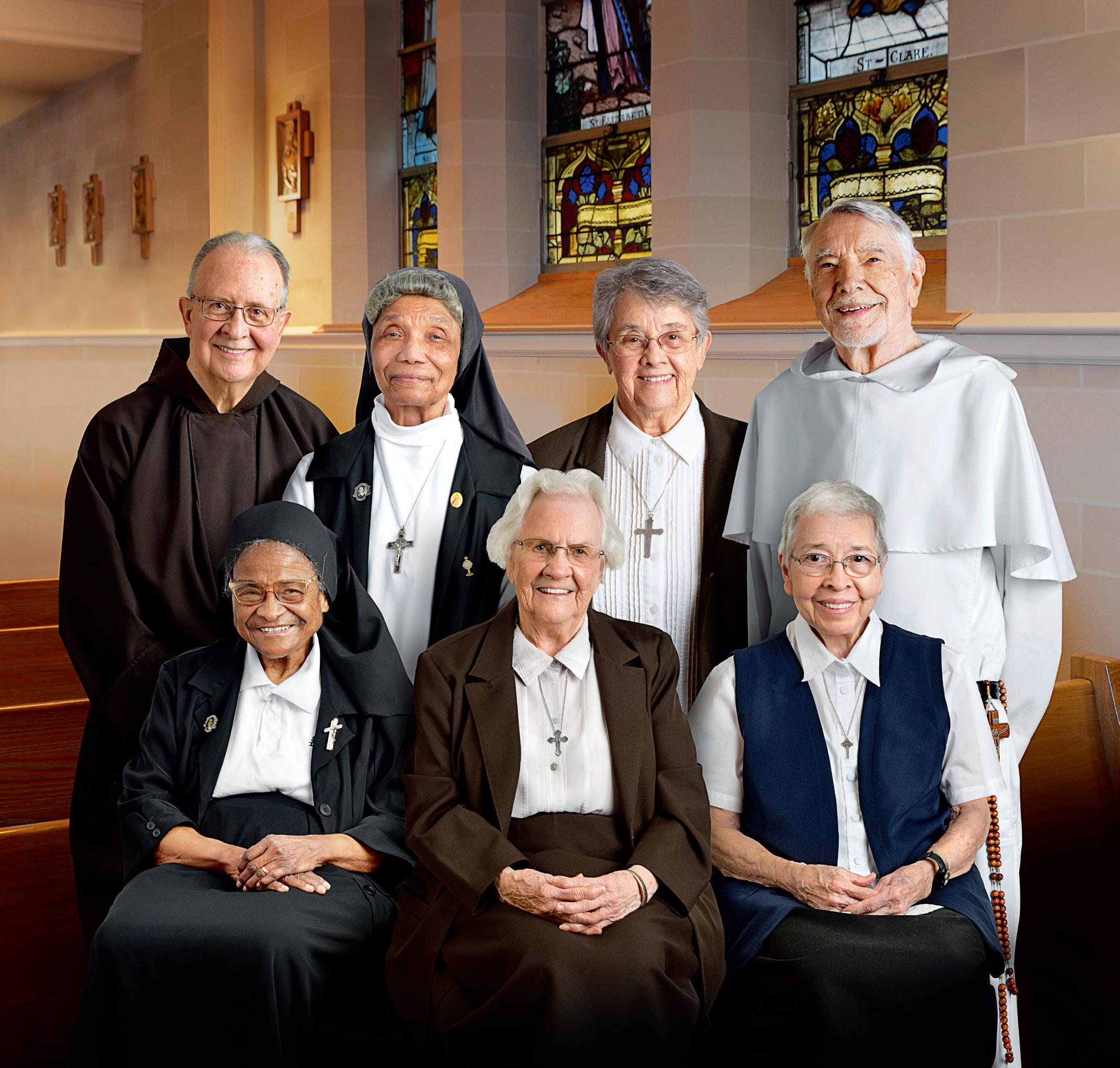
Please donate at your local parish
December 10–11 or by mail at:
Archdiocese of St. Paul and Minneapolis
Attn: Sister Lynore Girmscheid, SSND 777 Forest Street St. Paul MN 55106-3857
Make check payable to Archdiocese of St. Paul and Minneapolis/RFR.
DECEMBER 8, 2022 NATION+WORLD THE CATHOLIC SPIRIT • 9
— Catholic News Service
Please give to those who have given a lifetime. © 2022 United States Conference of Catholic Bishops, Washington DC All rights reserved •
Visit retiredreligious.org/2022photos to meet the religious pictured.
Photographer: Jim Judkis
retiredreligious.org
Decades of Christmas
Catholic Charities celebrates 30th anniversary of Christmas donation program
TT he roots of Christmas giving to the less fortunate run deep for Elizabeth Lyden of Catholic Charities. The 33-year-old community engagement and partnerships manager at the nonprofit has memories of her family’s tradition dating back to early childhood.
“I went to St. John the Evangelist in Little Canada,” she said. “And, I remember every year they had a tree (with gift ideas for needy people and families written on paper ornaments). I remember my parents taking me and taking that ornament.”
Her parents shopped for the item(s) on the ornament, with Elizabeth joining them. Today, she takes part in a similar program, but on a much larger scale. It’s Catholic Charities’ annual Giving Tree drive, which takes place at the Mall of America. Lyden runs the program as its project manager, and will help celebrate Giving Tree’s 30th anniversary on Dec. 17 and 18, when visitors to the mall can stop by a booth set up at Macy’s Court, near the southwest corner of the mall, to drop off clothing, toiletries and other items that they either purchased before coming or bought at stores inside the mall. (People can also buy gifts on an app, AmazonSmile.)
Catholic Charities will store the items at its distribution center in St. Paul and give them throughout the coming year to people in need, as identified by Catholic Charities staff members who work with them regularly.
“I think that this concept is not a foreign one to those of us who have attended Mass in our lives,” said Lyden, who now attends Mass at St. Rose of Lima in Roseville. “I still remember one year — it’s stuck in my mind — shopping for the perfect laundry basket for somebody. Life is really busy, I think, for all of us. And I think that something like the Giving Tree … is an opportunity for us to take a moment and reflect on the things we’re grateful for and reflect on the things that mean the most to us during the Christmas season.”
Lyden noted there’s more that individuals and families can do at the Giving Tree booth besides dropping off donated items. They can help assemble care kits for residents of Catholic Charities housing facilities or write messages to clients/guests who visit Catholic Charities’ drop-in centers.

“We’re trying to make it really inviting and accessible, in a way to learn about Catholic Charities’ mission,” said Lyden, adding that the five or six staff members who staff the booth throughout the weekend will wear blue aprons, which will help visitors to the mall spot them.
Two years ago, Giving Tree was a drive-up event because of the COVID-19 pandemic. Last year, it was held outdoors in a parking lot across the street from the mall and was called Warming House. Working alongside Lyden this year is Mike Rios-Keating, social justice education manager at Catholic Charities, who does parish outreach for Giving Tree. In more recent years, parishes in the Archdiocese of St. Paul and Minneapolis have started having their own Giving Tree events and delivering the collected
items to the Catholic Charities distribution center. That part of the Giving Tree program is growing, Rios-Keating said, and seems to be striking a chord with people who are looking to recapture an authentic Christmas spirit that sometimes seems swallowed up by commercialism. It also gives them a chance to start a practice that they can continue doing in the years ahead and pass on to their children and even grandchildren.
“I think people love tradition,” said RiosKeating, 33, who said at least 10 parishes are participating this year, although it’s hard to calculate because some parishes collect items and drop them off at Catholic Charities without officially signing up for Giving Tree. “Holidays offer an opportunity for tradition. … I think that families in Minnesota are excited for that kind of thing.”
St. Nicholas in Elko New Market joined the program this year, thanks to parishioner Jennifer Ward, who found out about it on the Catholic Charities website and followed up with a phone call to Lyden, who welcomed the parish to her organization’s growing list. Ward set up a small tree in the church Thanksgiving weekend, wrote gift items on paper ornaments and placed 110 of them on the tree for people to take and go shopping. She also provided a gift list of other items that are needed.
“I’m excited to do this because it’s the season of giving,” said Ward, 55, who belongs to St. Nicholas with her husband, Mark. “A lot of us are so blessed. It’s more fun for me to be able to give to other people and make that opportunity available for others to do the same.”
The Giving Tree will be open the entire time that the mall is open, from 10 a.m. to 9:30 p.m., on Dec. 17 (Saturday) and 11 a.m. to 7 p.m. Dec. 18 (Sunday). Lyden and Rios-Keating plan to be there the entire time, and Rios-Keating will bring in his wife, Cat, and their 18-month-old son, Terin, for a brief visit before he starts working. He is hoping this will begin a tradition for his own family.
“It offers something that is close to my heart because I’ve met many of these clients (who will receive the Giving Tree items),” said Rios-Keating, who attends Mass with his family at St. Thomas More in St. Paul. “To be able to share that with my wife and son — I’m excited to go and experience it.”
He is hoping an experience like this will have a deep and long-lasting effect on all who participate. To that end, he will offer a Zoom event a few days prior to Giving Tree in which he will discuss housing instability and Catholic social teaching. It’s called “No Room at the Inn” and will take place 6:30-8 p.m. Dec. 13. Free registration is available at cctwincities org/our organization/events/no room at the inn
Lyden and Rios-Keating noted that not only does Giving Tree connect with the real meaning of Christmas, but also to the recent pastoral letter released by Archbishop Bernard Hebda, titled “You Will Be My Witnesses: Gathered and Sent from the Upper Room.” The letter outlines the archbishop’s pastoral plan for the next three years, based on prayer and information gathering across the archdiocese in a three-year Archdiocesan Synod.
“Specifically, it’s got kind of a Pentecost theme,” Rios-Keating said of the pastoral letter. “Catholic Charities is mentioned in the section on the washing of the feet. Archbishop calls out that there are some models for how we can do this.
“And certainly, Catholic Charities is a place that physically has feet washing as one of the services at our Opportunity Centers. But I think that metaphorically, spiritually, as we think about that idea of how are we washing the feet of others and participating in that practice, I think that Giving Tree is an example of that. … We’ve been talking about the letter, and I think that it just ties in really nicely.”
To learn more about Giving Tree and see a list of most-needed items, visit cctwincities org/our organization/events/giving tree
10 • DECEMBER 8, 2022
Stories and photos by Dave
From left, Elizabeth Lyden and Mike Rios-Keating of Catholic Charities will don blue aprons to work at the Giving Tree booth at the Mall of America Dec. 17 and 18.
Christmas giving
Volunteer helps thousands of children with parents in prison receive Christmas gifts
AA small article in a Christian magazine caught Bob O’Connell’s eye in 1982. It described a national program that provides Christmas presents to children who have a parent in prison.
O’Connell was looking for a way to apply the Gospel message by serving the poor and suffering.
“I had been in the charismatic movement... for seven, eight years,” said O’Connell, 78, a member of St. Peter in Mendota. “I was restless. I was itchy for doing something. I was just kind of bored. ‘Okay, I’ve got a full-time job, but when it comes to doing some ministry, something for the Lord, I’m not doing anything.’ So, I thought, ‘What can I do?’”
Forty years later, that question is laid to rest, replaced more significantly by a new one: What has he been doing?
Plenty. The two-paragraph article he read in New Wine magazine in 1982 described the launch of a ministry called Project Angel Tree. It was started by a woman who had been incarcerated herself: Mary Kay Beard of Alabama. She had recently been hired by an organization called Prison Fellowship and was asked to come up with a Christmas project.
She decided to erect Christmas trees at two local shopping malls and attach paper angels with the names of boys and girls who had a parent in prison. On the angels were gift ideas, and Beard coordinated a team of people to deliver gifts to these children of inmates.
O’Connell started doing it in the Twin Cities that same year, and he has done it every year since. His 40 years of coordinating it from his Burnsville home have included expanding beyond the Twin Cities to include northern Minnesota, plus the neighboring states of Wisconsin, Iowa and North and South Dakota. This year, Missouri was added to the list.
O’Connell serves the program through his membership in a local, ecumenical Christian lay community called the People of Praise, which provides 130 to 150 volunteers annually to purchase and deliver gifts to 75 children a year.
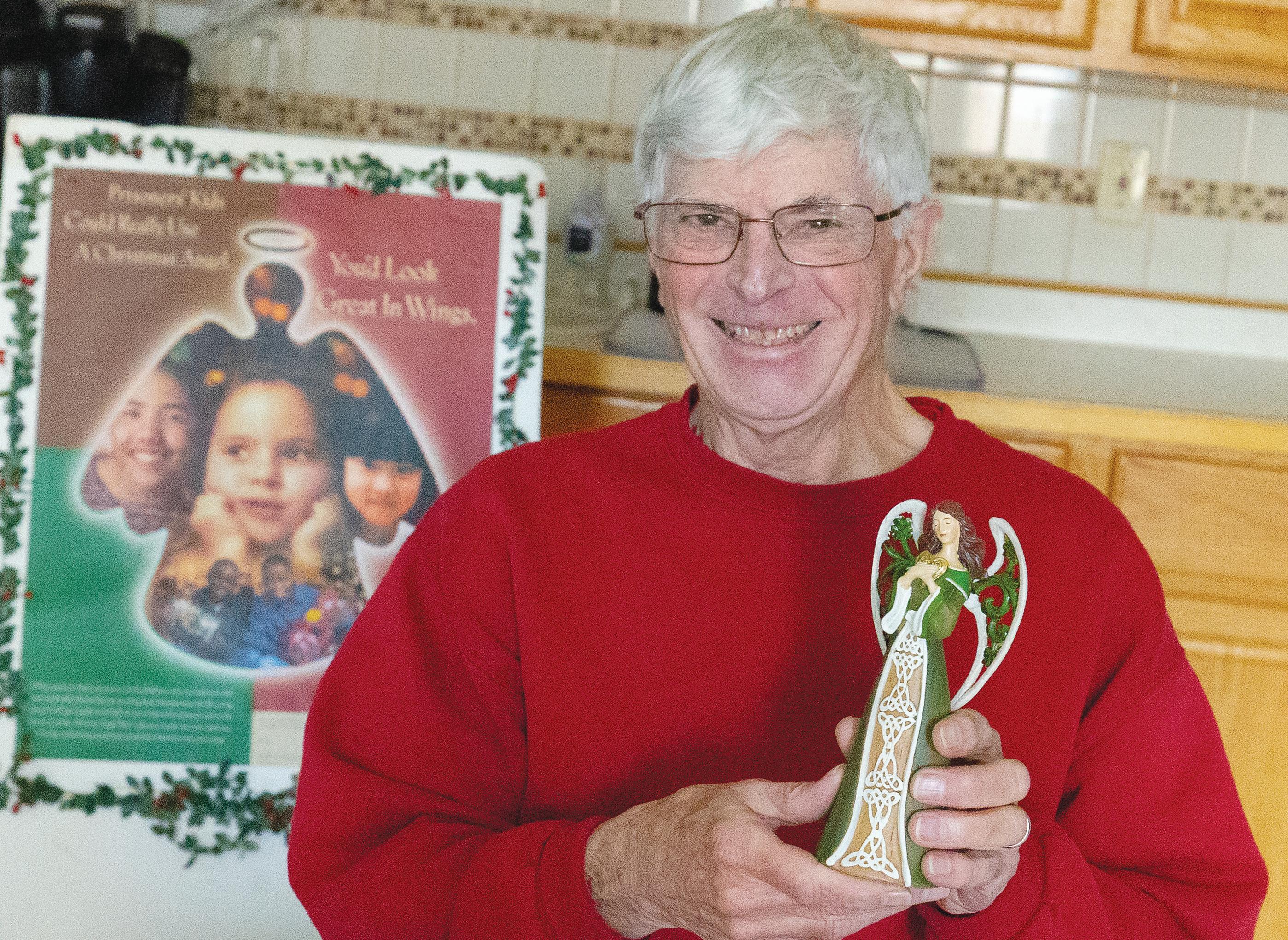
Prison chaplains provide names of inmates wanting to participate in the program. Angel Tree staff members pass along these names to people like O’Connell. Most of the organizations that buy and deliver gifts are churches. The program exists in all 50 states and serves about 300,000 children a year, said an Angel Tree staff member. Overall, Angel Tree volunteers have delivered more than 11 million Christmas gifts, according to its website.
Determination would be an understatement to describe four decades of commitment to Angel Tree by O’Connell. He fought through the COVID-19 pandemic in 2020 to find a way to deliver gifts (gift cards that year). Plus, he worked through the illness and death of two wives: Diane in 2013 and Deb in 2020. Both worked side by side with him when they were healthy, and he continued even as their health declined.
“Bob’s passion for what he does, and the detail that he keeps track of — it’s remarkable,” said long-time volunteer and friend Brad Bye, who has been inspired by O’Connell’s example to drive to places that sometimes are beyond the GPS grid.
“If there’s a kid (whose parent signed up for the program), there’s no hill big enough that Bob wouldn’t figure out a way to get it to him.”
O’Connell sees to it that no child is left behind when it comes to receiving gifts. Even though many of the families are unstable — often changing addresses several times over the course of just a few months — O’Connell doggedly tracks them down if the driver on the initial delivery attempt fails to reach them because they have moved. One time, he kept at it for almost two months, finally arriving at the doorstep of a very surprised mother on Feb. 14. Instead of saying, “Merry Christmas,” O’Connell jokingly proclaimed, “Happy Valentine’s Day.”
O’Connell expresses pride over his 100% delivery rate over 40 years, which will total just over 2,900 children after this year’s delivery Dec. 10 to about 75 children. But, even as the 3,000 mark approaches, O’Connell has decided to step aside after this year. Some health issues have surfaced, plus he is a newlywed again. His new wife, Mary, already has stepped in to help, starting just after their May nuptials. But, after spending every fall from October through midDecember running the program, O’Connell wants to pass the torch to a new leader.
“I can feel this year that I’m starting to slip a little,” he said. “You can see that age is catching up with you. You’re not maybe remembering certain things and the details. So, better to hand it off.”
He said he sometimes struggles remembering street addresses, but his memory is plenty sharp when it comes to recalling beautiful delivery moments. Like the time years ago when he worked with a family that included a 12-year-old whose father was in prison. The inmates are allowed to put a brief, personal message on each angel for the children. O’Connell’s callers dutifully record and then write the messages on the angels for the delivery drivers to read to the children. In this case, the father had told his son that he was to be “the man of the house” while his father served time in prison.
Thinking that was a lot to put on a pre-teen boy’s shoulders, O’Connell worked with a friend to get the boy a bike. It was a practical gift, as the boy lived in a rough neighborhood where gangs would often steal things like groceries from people walking down the street. A bike would give the boy a much faster mode of transportation and help him elude the gangs.
O’Connell made this delivery himself, handing off all the presents to the boy’s mother except the bike. He informed the mother that he had one more gift to deliver, but he would need some help bringing it from the car to the house. So, she sent her 12-year-old son outside to help.
“We get the bike out, and I said, ‘It’s all yours,’” O’Connell recalled. “And the kid was just — ‘Wow.’”
It was a “wow” moment for O’Connell, too, who connected that encounter with what Jesus talks about in the Gospels.
“I started to see, when the Lord talks in Scripture about reaching out and helping the prisoners, this is a way we can do that,” he said.
In more recent years, O’Connell has seen a shift in the families he serves, which revolves around the gender of the inmates.
“There’s been such an uptick in women going into prison,” O’Connell said. “I think a lot of that is drug related. They’re part of drug (dealing) rings.”
With the end in sight, O’Connell decided to get a special memento. Usually, he finds and orders an angel for each of his four callers. Sometimes, he’ll keep one for himself. This year, he found a green angel that connects with his heritage.
“I’m Irish,” he said. “I thought, ‘I’m gonna get an Irish angel this time.’”
But the “angels” he most cherishes are the 100-plus volunteers who say yes every year to helping bring a little joy to children who will feel the emptiness of having a parent in prison.
“That part is very gratifying to me, to see that many people that willing to do the part that they play,” he said. “It can never be a one-man deal, that’s for sure.”
THE CATHOLIC SPIRIT • 11
Hrbacek, The Catholic Spirit
Bob O’Connell is using what he calls an “Irish Angel” to commemorate his last year as a volunteer coordinator for Project Angel Tree.
St. Paul woman helps seminarians who might struggle in the classroom
Anna Wilgenbusch For The Catholic Spirit
After a prayer, in which she offers her work to God, Dunia Ruff uncovers a sheet of paper covered in small black dots.
“It looks like constellations, doesn’t it?” Ruff asks, inviting her student to approach the paper with a sense of curiosity. Then she reveals that the mysterious conglomeration of points is an intricate puzzle, designed to teach her students how to think.
The cognitive flexibility puzzle is one of many that Ruff uses as she helps seminarians studying in the Archdiocese of St. Paul and Minneapolis who have learning challenges, such as dyslexia and attention deficit disorder.

The approach is the fruit of many years Ruff has devoted to mediated learning, first proposed by Reuven Feuerstein in the mid-20th century. According to the Feuerstein Institute in Israel, which carries on his work, the method presents the educator as a mediator between the student and the task, rather than simply presenting the student with information.
“If you get between the child and the task, you can enhance it and even advance it,” said Ruff. “You ask (the student) questions, you entice the child to look at the task and make the connections.”
After 23 years as a teacher and teachercoach in the St. Paul public school system, Ruff, 68, a member of St. Mark in St. Paul, now devotes much of her time in retirement to helping seminarians at St. John Vianney College Seminary and The St. Paul Seminary, both in St. Paul. But Ruff’s work is not confined to the seminaries.
Regina Mancilla, 46, said she met Ruff in 2016 when she moved to the Twin Cities from Guatemala City to continue her work in education. Ruff, who is from Guatemala, helped her navigate the U.S. educational system, and now Mancilla is the director of community engagement at Risen Christ Catholic School in Minneapolis, the only dual immersion (Spanish and English) Catholic school in Minnesota. Ninety percent of its student population is Hispanic, Mancilla said.
Ruff has made her services available at Risen Christ School in a variety of ways.
In early 2021, she coached tutors at the school how to engage with students over Zoom. Now Ruff is offering a fourpart series to parents of students at the school, delivered in Spanish, which aims to increase parent participation in their children’s education.
“She helps the Spanish community to … understand the great mission that they have as the first educators of their kids, and then how to be better parents through the lens of faith,” Mancilla said.
Ruff also encourages parents to be proud of their cultural heritage, so they can convey the strength that their Hispanic roots bring to their families. In the first session of the four-part series, which was entitled “Raising the children that God has entrusted us,” Ruff asked the parents to tell stories from their childhood.
“It was really amazing to see how much they want somebody to listen to their stories,” Mancilla said. Twenty-five parents attended the first session, she said.
“She is so generous,” Mancilla said.
At the graduate-level St. Paul Seminary, Cullen Gallagher, a 26-yearold seminarian studying for the diocese of Winona-Rochester, has been working with Ruff this year. It has helped him manage his attention deficit and hyperactivity disorder, he said.
“After every session, my brain just hurts,” said Gallagher, who graduated in 2019 from the undergraduate Immaculate Heart of Mary Seminary in Winona and hopes to be ordained to the

priesthood in 2026. Between seminaries, he worked for two years as a FedEx delivery driver.
Gallagher, who was diagnosed with ADHD when he was in the seventh grade, said the condition has posed challenges to his schooling, especially in the rigorous academic and liturgical schedule that he maintains for seminary.
Ruff’s work has helped him approach tasks in a way that works with, rather than against, his ADHD, he said. “She helps me learn how to do tasks in a different way, instead of being so singleminded about things,” he said.
Now he splits his notes into sections, which helps him focus on different areas at a time. He also uses breathing techniques Ruff has taught him to focus his mind during a task.
“Dunia is fantastic. She is a saint. She is one of the most gentle and calm people I’ve ever met,” said Gallagher. “I definitely feel more on top of my ADHD now that I am in seminary.”
Gallagher and Ruff meet once a week for about an hour. After a prayer, Ruff presents Gallagher with a task that requires cognitive flexibility. After he completes a given task, which he describes as very difficult, they review what skills he used to solve it, and how he can use those skills in other areas of his life, such as prayer or study.
Gallagher said the skills he has learned from Ruff will help him perform a litany of priestly tasks, such as organizing parish festivals, preparing homilies, and keeping
a parish office organized.
Gallagher also meets with Ruff and a group of fellow seminarians once a month, where they reflect on their academic progress as they work with diagnoses like ADHD and dyslexia.
Guatemalan roots
Teaching has been an integral part of Ruff’s life. It is a story woven from her Guatemalan roots.
“Education has always been my natural way,” Ruff said. When she was 14, she began an informal night school for the children of maids in Guatemala City. Although the country had a public school system, children had to have shoes and basic school supplies to attend — which many of them could not afford.
When she was 16, she entered a convent in Guatemala, Hermanas Terciarias Capuchinas, which she left when she was 21, intending to take a brief pause from her novitiate formation. During this time, she began working with children with special needs, became fascinated with the work and decided to pursue it.
At age 26, Ruff came to Minnesota, encouraged by her brother who had been an exchange student in Minneapolis. A large Catholic family she met offered her room and board and a scholarship at St. Catherine University in St. Paul, which allowed her to cover her tuition while working a side job.
She married Paul Ruff, who now works as the director of Counseling Services at the St. Paul Seminary, and was pregnant with their first daughter, Maria, when she graduated from St. Kate’s in 1984. She shelved her teaching career to care for their four children but began working for the St. Paul public school system when she was 41. Her expectations for teaching in the U.S. — where the average child had many more resources than in Guatemala — did not align with what she discovered in the classroom.
“I started noticing, these kids have everything, but they are not learning. Why are they not learning?” she said. “I always felt unsatisfied.”
She began a personal quest to find out how best to instruct the children she served, who came from a wide variety

FAITH+CULTURE 12 • THE CATHOLIC SPIRIT DECEMBER 8, 2022
FUNERAL CHAPELS, INC. Robbinsdale • Plymouth • St. Louis Park Please cut out form below and mail to: 3888 West Broadway • Robbinsdale, MN 55422
Name Address City State Zip
o Please mail information regarding pre-need funeral arrangements.
o Please have a funeral director call me with information regarding prearrangements. My phone number is
PAGE 19
PLEASE TURN TO LEARNING ON
Dunia Ruff works with seminarian Cullen Gallagher of the Diocese of WinonaRochester Nov. 30 at The St. Paul Seminary in St. Paul.
DAVE HRBACEK THE CATHOLIC SPIRIT
Starting from scratch: An immigrant builds a (beautiful) life
 By Christina Capecchi For The Catholic Spirit
By Christina Capecchi For The Catholic Spirit
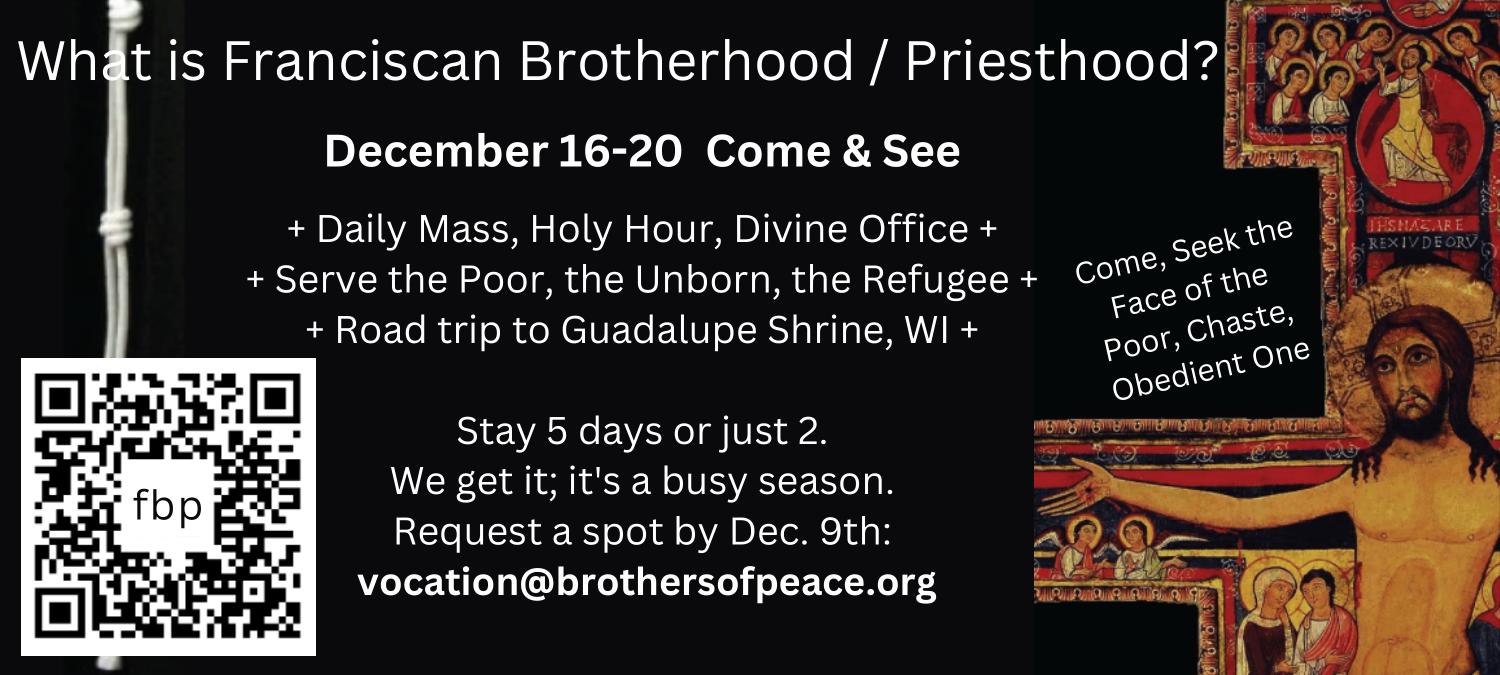
Asanka Perera and her husband, Don, won the green card lottery 12 years ago, emigrating from Sri Lanka and settling in Richfield. They brought their two daughters, but their son did not qualify – at 22, he was over age. This August, he and his wife and two young children were finally able to immigrate to the U.S. They moved into Asanka and Don’s three-bedroom house. “We’re making up for lost time,” said Asanka, 57, a day care provider and member of St. Peter in Richfield. This Advent, she’s looking back on her grace-filled journey.
Q Let’s start with your move to the U.S. What’s it like being an immigrant here?
A You are nobody when you come here. You lose your identity and start from scratch. You have to prove yourself. My hardest part was finding a community. The faith kept Don and I going. The Catholic Church is where we felt the most connection. Going to Mass felt like a bit of home. And my youngest was able to attend Catholic school. That was my dream.
Q How long did it take to build a new identity?
A Five to six years. I had always been a stay-at-home mom, but my husband couldn’t find a job, so I was the sole breadwinner. I started working as a teacher aide at a child care center and I was mentored by an amazing woman. I studied Montessori and earned my certification, then I started working as a nanny, and in 2014, I started my in-home day care. It gave me a sense of happiness and achievement and purpose.
Q It sounds like the new Asanka who emerged was very different from the old Asanka in Sri Lanka!
A Totally. God put me into new roles in every aspect of life. Now I understand other people’s points of view.
Q What was your focus, when it came to raising your girls in the U.S.?
A We wanted to model generosity and simplicity — be content with what you have and always help those in need. We drive around and give out McDonald’s gift cards to the homeless. Twice a month I cook and donate a meal to Mary Jo Copeland’s Sharing and Caring Hands. And every Christmas we pick two or three children from the
Christmas tree at church and buy their Christmas gifts.
I always tell my girls: We can help people because I’m not an impulse buyer. We look for every deal, every opportunity to minimize buying. They will ask me, “Why don’t you get coffee from Starbucks?”
It’s not that I can’t afford it. Sometimes I want to get it. But then I think I could use that money to help somebody. It adds up to a lot of money. We can always make a cup of coffee at home.
The girls see we don’t have anything fancy in our home. They’re basics. It’s all white — white linen, white cups — because you don’t get tired of white. Even the bed sheets! These are the bed sheets I brought over 12 years ago.
Q How does your Catholic faith compel you?
A It’s Jesus’ core teaching: Feed the hungry, clothe the naked. That’s what I think he expects us to do. Share what you have.
A In Sri Lanka, my grandma and grandpa would open their house on Christmas day to the entire village, from 7 a.m. to 9 p.m. There was this 12-foot table full of traditional, celebratory food — milk rice, coconut milk, all the Sri Lankan sweet meats and finger foods. Nobody could leave without having a meal. That is embedded in me. I cannot help it. I want to feed people.
Q What do you enjoy about cooking?
A It’s my therapy. I put my heart and soul into cooking. It makes me humble, too. Sometimes, I have this huge plan, and it could be a flop.
I always have my mom’s spices on hand — her curry powder, her chili flakes and the coconut milk. I play music — I love Abba — and sometimes I’m on the phone with my friend. I like to do many things at one time. I’m always on the move.
Q What’s on your bucket list?
A We love traveling. Someday we would love to travel to all the places that Mother Mary appeared.
Q Tell me about your devotion to the Blessed Mother.
A She’s my saint. She knows our pain more than anybody else. She saved my life. I was given a second chance when I had my youngest. She was born on the 15th of August, the feast of Assumption. I was bleeding after the C-section. They thought they had lost me. They couldn’t find my pulse.
I felt my life was going, and I knew it was the feast of the Assumption, so I just said, “Don’t take me now.” At that moment, I got my life back. So, we are devoted to her. I pray to her every single day without failing.
Q Wow! You hadn’t seen your son and his young family in three and a half years, and now you’re living together.
A It’s a big transition but a good one. We’ve changed a lot. We are trying to get to know each other, accepting each other, who we are, who they’ve become. We are becoming a family. At first, I worried I didn’t have a connection with my 8-year-old granddaughter, but we are bonding. I try to involve her in cooking. She loves to cuddle with me, read stories together and paint nails. She loves one-on-one time with me — she will make sure to get it.
Q Do her parents see a change in her, now that she’s soaking up all that grandma love?
A They did say that. She’s very happy. She’s a third-grader at Annunciation in Minneapolis, and she’s blossoming. My son and daughter-in-law see how connected we are to God, how much we go to adoration. They feel it’s a great blessing for their daughter to see.
Q What do you know for sure?
A God has a huge purpose for me, and I’m slowly inching toward the better version of myself. By serving the poor, I know that I will inherit heaven. I will go there to see him.
Q You have a clarity. You know your mission from God, and you get up every day and do it.
A Yes, I do. He’s preparing me for something greater. The world is in need.
DECEMBER 8, 2022 FAITH+CULTURE THE CATHOLIC SPIRIT • 13
Q Where did you learn that spirit of giving?
Look for The Catholic Spirit advertising insert from SHARING AND CARING HANDS in all copies of this issue. N O T I C E
DAVE HRBACEK | THE CATHOLIC SPIRIT
Rejoice and have patience
This weekend we celebrate the third Sunday in Advent. One of the few times of the year that we see a unique color used in the liturgy, namely rose. Rose is used only twice a year in the Church’s liturgical calendar, Gaudete Sunday in Advent and Laetare Sunday in Lent. Both times we are told to rejoice and have patience. Rejoice because we have been promised great things from our heavenly Father and we see that these things are nearby. In this case, the birth of Christ at Christmas and Christ’s second coming at the end of time. We see them near, and we rejoice.
These events are promised to us by God to be accompanied by many signs and wonders. We have been hearing about these signs and wonders for many weeks, but this week we are given very specific signs. Signs of reversal.
“The desert and the parched land will exult; the steppe will rejoice and bloom … Strengthen the hands that are feeble, make firm the knees that are weak, say to those whose hearts are frightened: Be strong, fear not! Here is your God, he comes with vindication.”
Reversal: a change from what was to its opposite. At the coming of Christ, he will reverse many things of this world, all the way from healing the corruption of the natural world (deserts blooming with flowers) to correcting the corruption of the institutional world (the mighty being cast down from their thrones and lifting up
Preparation is key to a successful marriage
It is an established fact that a pre-marriage preparation program enhances the probability of a successful marriage. Researchers report it statistically. Counselors and social workers know it empirically. Even the State of Minnesota acknowledges this. Divorces are a burden on the state, and to reduce them a discount is given on the fee for a marriage license for couples that show proof of participation in a pre-marriage program.
Parishes require engaged couples to register well in advance of their actual wedding date to provide adequate time to prepare for the sacrament. The minimum requirement is six months. Some parishes require nine while others require a year.
In the big picture, the amount of time required is minimal. There are meetings with the priest, deacon, or members of the parish staff; one or more workshops; a pre-marriage retreat; a series of classes; and sessions with a mentor couple — to list many of the usual elements. The time required varies from about 20 hours on the low end to 50 hours on the high end.
Engaged couples are busy and sometimes complain about the amount of time required. When they do so, I ask, “What is more important, your marriage or your job?” “What do you plan to do for life, your marriage or your job?” They instinctively snap back, “Our marriage.” Then I probe further, “How much time have you spent preparing for your job?” Some jobs require a training program of weeks or months. Most require a college degree. Others require an advanced degree and an internship. When couples compare the amount of time they have spent preparing for their careers with the amount of time required to prepare for their marriage, and they weigh their relative importance, I have found that the complaining evaporates almost instantly.
KNOW the SAINTS
DAILY Scriptures
Sunday, Dec. 11
Third Sunday of Advent Is 35:1-6a, 10 Jas 5:7-10 Mt 11:2-11
the lowly.) However, the greatest sign of reversal at the coming of Christ is the reversal that happens in the hearts of people. Only he can truly reverse the directions and tendencies of our hearts away from evil toward what is good, what is of God. So, when we see this reversal take place in our world and in our hearts, we rejoice, for they are a sign of the coming of Christ.
However, we are also told this week to have patience. Paul talks about how the coming of the Lord is near, but not here yet. He says that we must be like farmers who know the harvest is coming soon but cannot harvest yet. He is filled with anticipation, nervous energy, and joy, but he must wait. But this time of waiting is not idle. Whether it is waiting for Christmas, for the end of time, or for our own salvation, this time is meant to be fruitful. We are to spend it learning to live in hope. This hope is not simply wishful thinking or trying our best for whatever goals. Hope means to live now as though we already possess the divine gifts we have been promised by God. Living here and now, like we are already in heaven. This is hope. God has promised many great things, like eternal life, happiness, and love to those who follow him here and now. We already have these gifts partially. But living in hope means living with the joy of knowing we have been promised these things and living like we already possess them fully. This is only possible when we have patience.
Rejoice because Christ is coming. We see his signs in the changing of this world and of our hearts. Have patience because he has not yet come — but live in hope and rejoice.
Father Gifford is pastor of St. Peter Claver in St. Paul.
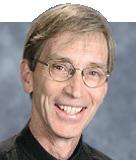
The Church insists on the necessity of preparing for the reception of the sacraments so the person will better understand the mysteries of the faith.
The Church insists on the necessity of preparing for the reception of the sacraments so the person will better understand the mysteries of the faith. Preparation is required for the parents of a baby before its baptism or for catechumens before their own baptisms, for parents and child before first reconciliation and first Eucharist, for a candidate before confirmation, and for candidates for holy orders before their ordinations. Marriage is no exception. Only the sacrament of anointing is exempt.
The preparation process begins with a meeting with a priest, deacon, or member of the parish staff. These sessions are used to ascertain the couple’s freedom and readiness for marriage, assemble the required documents, provide catechesis on the Church’s teaching on marriage and family life and prepare for the marriage liturgy.
The list of topics for the marriage preparation curriculum includes the sacramental nature and permanence of marriage; growth in virtue and holiness as individuals and as a couple; personal, shared and liturgical prayer; intimacy, sexuality and chastity; natural family planning; children and family; healthy communication and conflict management; family of origin issues; the tension between relationship, career, work and leisure; finances; and interfaith issues. This instruction usually is provided by a team comprised of clergy, pastoral staff members, mentor couples, catechists and counselors.
Other requirements include a premarital inventory such as Prepare or FOCCUS and a pre-marriage retreat. When a couple prepares well for their upcoming marriage, they are cooperating with God’s grace and laying a firm foundation for a lifetime covenant of love.
Father Van Sloun is the clergy services director for the Archdiocese of St. Paul and Minneapolis. This column is part of a series on the sacrament of marriage.
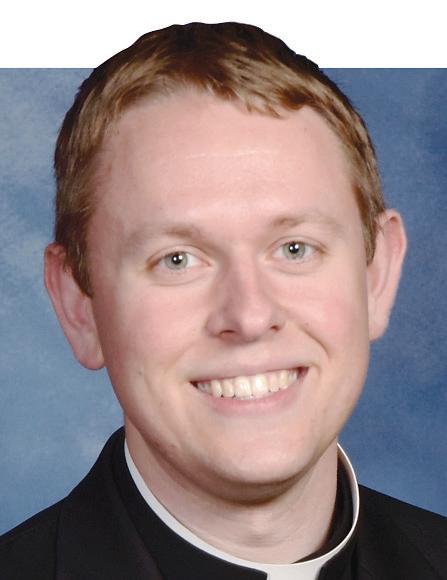
Monday, Dec. 12 Our Lady of Guadalupe Zec 2:14-17 Lk 1:26-38
Tuesday, Dec. 13
St. Lucy, virgin and martyr Zep 3:1-2, 9-13 Mt 21:28-32
Wednesday, Dec. 14
St. John of the Cross, priest and doctor of the Church Is 45:6c-8, 18, 21c-25 Lk 7:18b-23
Thursday, Dec. 15 Is 54:1-10 Lk 7:24-30
Friday, Dec. 16 Is 56:1-3a, 6-8 Jn 5:33-36
Saturday, Dec. 17 Gn 49:2, 8-10 Mt 1:1-17
Sunday, Dec. 18 Fourth Sunday of Advent Is 7:10-14 Rom 1:1-7 Mt 1:18-24
Monday, Dec. 19 Jgs 13:2-7, 24-25a Lk 1:5-25
Tuesday, Dec. 20 Is 7:10-14 Lk 1:26-38
Wednesday, Dec. 21 Sg 2:8-14 Lk 1:39-45
Thursday, Dec. 22 1 Sm 1:24-28 Lk 1:46-56
Friday, Dec. 23 Mal 3:1-4, 23-24 Lk 1:57-66
Saturday, Dec. 24 Christmas Vigil Is 62:1-5 Acts 13:16-17, 22-25 Mt 1:1-25
Sunday, Dec. 25
The Nativity of the Lord Is 62:11-12 Ti 3:4-7 Lk 2:15-20
ST. PETER CANISIUS (1521-1597) This doctor of the Church was born in Holland and studied canon law in Belgium before turning to the study of theology in Germany. He entered the Society of Jesus in 1543 and soon was a well-known preacher. He attended two sessions of the Council of Trent and was an important figure in the post-conciliar Catholic revival in Europe. As the Jesuit provincial in southern Germany, Austria and Bohemia, he started schools, colleges and seminaries, and is credited with keeping the southern German peoples Catholic. His feast day is Dec. 21.
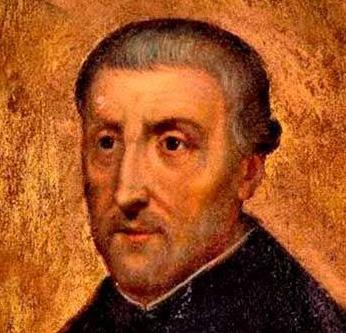
FOCUSONFAITH 14 • THE CATHOLIC SPIRIT DECEMBER 8, 2022
SUNDAY SCRIPTURES | FATHER JOSEPH
GIFFORD
— Catholic News Service
FAITH FUNDAMENTALS | FATHER MICHAEL VAN SLOUN
Hope means to live now as though we already possess the divine gifts we have been promised by God.
TWENTY SOMETHING | CHRISTINA CAPECCHI
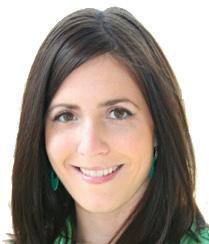
The first notes: when music and prayer converge

From the beginning, there was music. It signaled the parade of life — comings and goings, mornings and evenings. The chirping of birds. The clatter of dishes. The croaking of frogs.
Guido Monaco, an 11th century Italian, loved it all — especially the chanting of monks.
It confirmed what he had always sensed: Sometimes, music isn’t simply music. It is more. It is prayer.
The passionate Catholic was drawn to religious life, studying to become a Benedictine monk at the Pomposa Abbey on the Adriatic coast. With its rugged cliffs, lush groves and turquoise waters, the beautiful setting kindled Guido’s spiritual fervor. He knew where it came from. Singing felt like the best way to offer his thanks.
But learning the hymns and harmonies that stirred his soul was hard. They had to be memorized — there was no written system for musical notation — and it often took months.
As Guido poured over the manuscripts in the abbey’s legendary library, he wondered: Why couldn’t music be written down and read like the words in a book?
One day, while practicing his hymns, Guido realized he was singing six basic tones. No matter the melody, no matter how high or low he sang, the same tones repeated themselves. He took a piece of parchment and drew six marks — each one stacked higher than the one before.
Now to name them. Guido studied a sentence in his favorite hymn to St. John: “In order for the servants to sing the wonders of your deeds, dissolve the defect on the weak lip, St. John.” This was the longing of his heart: to more perfectly praise the Creator of all the beauty.
Guido used the first syllable of each Latin word — ut, re, mi, fa, sol, la — to name the six tones. He sang them out loud, raising his voice step by step. If every song could be written down in this way, people could learn to read music! They could know the correct melody to sing even if they had never heard it before!
His heart raced.
His fellow monks were less excited. One reprimanded him: Spend less time thinking up silly ideas and more time praying.
But Guido’s dream of sharing music more readily never left him. Bishop Theobald of Arezzo visited the abbey, heard about Guido’s passion for music and invited him to come train the choir at his cathedral. The bishop was dazzled by Guido’s new method of musical notation and encouraged him to try it out with the cathedral singers. Within days, they had mastered hymns they had never heard before.
It worked!
The bishop urged Guido to share his revolutionary idea in a book. Pope John XIX summoned the monk, eager to see it himself.
The pope recognized what was before him: the
stuff in” line. It comes, I’m told, from financial journalist Michael Lewis’ 2011 book “Boomerang,” an investigation into how different countries contributed to the global financial crisis of 2008. In this context, Lewis’ saying implies that Germans’ reservedness inhibited them from questioning and pushing back against the bad bonds that sunk the world economy.
I recently learned an amusing description for German people (modified for print in The Catholic Spirit): Germans keep their stuff in.
It’s a clever quip that captures that quality of uptightness, inflexibility and reservedness that, fair or not, has come to characterize the popular perception of Germans and those of German descent.
In fact, there’s a whole catalogue of these kinds of cliched sayings about various cultural and ethnic personality traits: The French are snobby, Italians are ruled by their passions and Americans are loud and obnoxious. I’m well familiar with the genre; growing up, one of my favorite T-shirts read “Warning: Irish Temper and German Stubbornness.”
Part of the reason we love these sorts of sayings is because they notice and make light of the ways our cultural backgrounds shape us. In doing so, they also tend to implicitly justify the traits and behaviors described. After all, these sayings are presented as simply the way things are, as given and unchangeable as our genetic code.
Which is interesting to keep in mind when considering the origin of the “Germans keep their
In other words, as “given” as the German tendency toward restraint might be, in this case, it contributed to a bad situation. Simply saying that it’s a profoundly reinforced cultural trait may be true, but it doesn’t get around the fact that it effectively acted as a blind spot and undermined prudence and responsibility.
This should make us pause before relishing in and excusing our various culturally inherited idiosyncrasies and impulses. Just because these tendencies are deepseated doesn’t mean they don’t need further refinement or amendment, or that the actions that proceed from them can’t be morally problematic or are not our responsibility. Something isn’t automatically justifiable simply because it’s handed down and reinforced via a wider culture.
The same can be said not just for cultural traits, but even familial ones. Our families undoubtedly shape and influence us at the deepest levels, just as God intended. But the reality of freedom means that sometimes not all the traits and tendencies we receive are necessarily good ones.
This is a lesson I’ve had to learn over time, as I’ve come to recognize that the unduly competitive and overly critical climate I grew up in in a household of five boys does not always lend itself to virtuous behavior. Simply saying “That’s just the way I am!” is no excuse when these kinds of acquired traits contribute to
faith:
earnest
invention of a music notation, what was and would remain the only language common to all humanity. A love of music that sprang from a love of the Lord.
Eventually the first note was changed to “do” and a seventh note, ti, was added. But Guido’s system endured.
As we sing Christmas carols this month, may we remember the earnest monk who embraced the transcendentals of our Catholic faith: truth, goodness and beauty. They come from God and spill over into everything he created.
One could spend a lifetime pondering their delicate interplay, like snowflakes glittering in the sun. We may first identify beauty, but it is goodness, too. We might sense a truth, but beauty is in its core. We are drawn to goodness because it contains truth.
This endless loop comes from God and points us back to him. We need not fully grasp it, but we can feel it and follow it. And the gratitude that pours out will make a beautiful sound.
Capecchi is a freelance writer from Inver Grove Heights.
as important as our cultural and familial belongings are, they are not the ultimate criteria of our life. Becoming Christ-like is.
division, egoism and a lack of self-giving love. I, and all of us, are called to something more.
Cultural factors, familial factors, and even biological factors shape us in profound ways, and we certainly can’t be blamed for the ways in which we’ve been formed beyond our control. But it’s also true that these tendencies can mislead us when uncritically followed. Therefore, it’s incumbent upon us, in cooperation with God’s grace, to work to overcome any habits or traits that prevent us from loving God and neighbor. As Msgr. Steven Rolfs at The St. Paul Seminary is fond of saying about this kind of dynamic, “It’s not your fault, but it is your problem.”
Because as important as our cultural and familial belongings are, they are not the ultimate criteria of our life. Becoming Christ-like is. In God’s plan, culture and family are meant to contribute to becoming more like Christ (who, after all, belonged to a particular culture and a particular family). But when they don’t, it’s our responsibility to work to overcome or rein in whatever unhelpful habits and tendencies we’ve inherited — be it an Irish temper, German stubbornness, or otherwise.
Liedl, a Twin Cities resident, is the senior editor of the National Catholic Register and a graduate student in theology at The St. Paul Seminary School of Divinity.
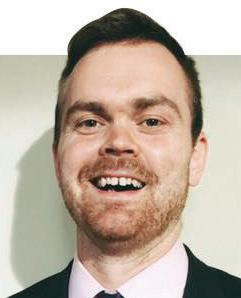
COMMENTARY DECEMBER 8, 2022 THE CATHOLIC SPIRIT • 15
Germans keep their stuff in
ALREADY/NOT YET | JONATHAN LIEDL
iSTOCK PHOTO | FRANCIS49
Because
As we sing Christmas carols this month, may we remember the
monk who embraced the transcendentals of our Catholic
truth, goodness and beauty. They come from God and spill over into everything he created.
OTECT

Christmas is known for giving presents to one another, and yet what we fundamentally crave is the presence of others. The experience of feeling validated by others is foundational to a healthy, adult life. Likewise, God’s presence has been foundational to our Judeo-Christian faith, from the moment of Moses’ encounter with the great I AM in the burning bush to the presence of Christ in the Eucharist of St. Luke’s Gospel. Responding to the gift of God’s presence in our lives is the duty of our soul, which St. Augustine contended does not find rest until it rests in God.
Brother Lawrence, or Nicolas Hermann, a noted 17th-century Carmelite friar, shares the wisdom of his spiritual direction in “The Practice of the Presence of God.” He states, “as for me, I keep myself at rest with Him at the depth and center of my soul as much as I can, and when I am with Him in this way, I am not afraid of anything.”
It may seem unfeasible to keep the presence of God at the center of our soul at this impossibly busy, frenetic month of year. We are so distracted and preoccupied
by the hustle and bustle of the season that we often miss the entire purpose of this precious time, which is actually to bring us closer to God.
If a quiet, present soul is expected of us, how can we choose this counter-cultural phenomena in the midst of our turbulent, chaotic culture? By simply following one of the maxims, or guidelines, provided by Brother Lawrence, we are given the direction we seek. He begins by stating that the practice of God’s presence is the application of our spirit to God “through the vivid recollection that God is present to us.” Then we must practice our conscious awareness of God, which is the foundation of the habit formed by committing our soul to worshiping God, which allows our soul to rest in God. In this space, our soul speaks to God, “heart to heart, always delighting itself in God in a state of great and profound peace.”
The next step of Brother Lawrence’s instruction to pledging our soul to God’s presence is found in the lighting of our soul with the divine fire of God himself. Brother Lawrence states, “This fire burns so ardently with the love of God that we find ourselves obliged to do a number of outward things in order to moderate it.” This is beautifully witnessed in the actions we take to benefit our brothers and sisters in need.
Next, the soul is permitted complete freedom by God, “provided that it wishes to remain always with Him and rely on Him. The only constraint on the soul is its consent to live in the presence of God.” Finally, the practice of the presence of God is “the life and nourishment of the soul that can be obtained with the grace of the Lord.”
The question for us is whether we are willing to give
to take abortion access even further by enshrining this radical regime in our statutes.
We must work against a policy of abortion on demand. But in saying “no” to abortion, we must help people say “yes” to life. We propose creating a supportive climate for mothers and families by promoting policies such as nutritional supports for expectant mothers, adequate health care coverage during and after pregnancy for the mother and the child, a child tax credit, child care assistance, housing
ACTION PLAN
u�Pray for God’s grace to be present to others this Advent. Choose to give your presence, as well as presents, to others.
u�Make a commitment to practice God’s presence in 2023. Allow this final month of the year to be the beginning of a new year of transformational, spiritual growth.
our soul the rest it seeks so it can find sustenance in God’s goodness. To do this, we must turn away from the distractions we encounter at every turn and embrace the quiet nurturing that is abundantly available to us in the Advent prayers and songs. This liturgical season prepares us for the coming of Christ in our hearts and souls, encouraging us be a light in the darkness of our world.
We may want to give presents to those we love. This season encourages us to consider giving our presence as well. We may decide to say “no” to doing one more thing so that we have space to say “yes” to spending time with someone in need. We may choose to say “no” to taking on one more project so that we can say “yes” to being available to a loved one who has asked for our time. Our presence is often more valuable than any present we can give to others, even though it may seem easier to give things rather than ourselves.
Soucheray is a licensed marriage and family therapist emeritus and a member of St. Ambrose in Woodbury. Learn more at her website ifhwb com
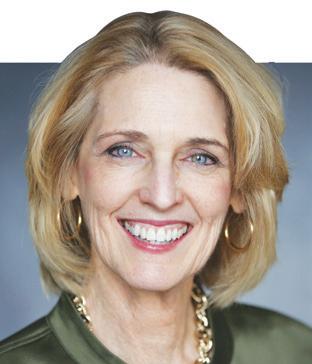
Join us for Capitol Thursdays! From January to May, RSVP to join the Minnesota Catholic Conference at 10 a.m. any second or fourth Thursday. At our office, we’ll equip you to successfully advocate for policies that bring about a positive vision of the good before you then meet with your legislators.
opportunity for Minnesota Catholics to, as Pope Francis has said, “meddle in politics” by proposing a positive vision: the ability to choose what we ought, not the license to choose what we want.
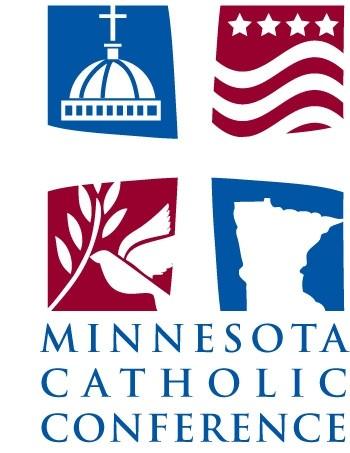
Abortion is already legal up till birth in Minnesota, and our state Supreme Court has declared abortion access part of the right to privacy in our constitution. Almost half of abortions are paid for by taxpayers. The court’s decisions already put Minnesota on par with North Korea and China. Yet, abortion proponents want
Similarly, when it comes to legalizing recreational marijuana, we owe Minnesotans a positive vision of the good. Rather than enabling people to dull their brain function with marijuana, we should address the root causes that lead so many to recreational drug use in the first place. As Catholics, we believe there is a better path to justice than normalizing and commercializing a drug that has been linked to the degradation of communities, the environment and the common good.
Legalizing what some will treat as a recreational activity will likely impose much harm on the rest of us, especially in the realm of public safety, where it is associated with an increase in crime and traffic accidents. Marijuana endangers those already struggling with substance abuse and serves as a gateway drug for youth. Among states where recreational marijuana is legal, drug use among teenagers increases. We owe it to Minnesotans to provide safe roadways, safe workplaces
We must also pray for our legislators. Join us for adoration each first Friday of the month (January to May) any time from 9 a.m.-4 p.m. at the Capitol in the Governor’s Dining Room. In April, adoration will take place on the 14th due to Good Friday.
There is free parking at our office — 525 Park Street — for adoration or Capitol Thursdays. Head to mncatholic org/events for details and to RSVP.
and healthy internal and external environments to raise children.
Catholics cannot only oppose the killing of the innocent and the legalizing of vice. We must also propose a better alternative — a positive vision of the good. You can do so by asking your legislators to enact policies that create a welcoming environment for all.

“Inside the Capitol” is a legislative update from Minnesota Catholic Conference.

For converts to Catholicism, RCIA is now ‘OCIA’
By Daniel Meloy Catholic News Service
For anyone interested in becoming Catholic, wishing to complete the sacraments or wanting to learn more about what the Church teaches, the answer for decades was “join RCIA.”
The Rite of Christian Initiation of Adults, the process by which the Church brings in new converts and educates catechumens and candidates, has been a staple in Catholic life and lingo for years.
But in November 2021, the U.S. Conference of Catholic Bishops changed the name of one of the best-known acronyms in the Church, reorienting
the Rite of Christian Initiation of Adults (RCIA) into the new Order of Christian Initiation of Adults (OCIA).
The change from “rite” to “order” is in part because of a retranslation of the Latin name Order of Initiation of Adult Catechumens (Ordo Initiationis Christianae Adultorum) into English, said Mercy Sister Esther Mary Nickel, director of sacred worship in the Archdiocese of Detroit’s Department of Evangelization and Missionary Discipleship.
“When I studied in Rome, we had OCIA, because it was all in Latin,” Sister Nickel told Detroit Catholic, the archdiocese’s news outlet. “All we have done is taken the ‘O,’ which is ‘ordo,’
and made it back to ‘order,’ instead of the ‘R’ for ‘rite.’ I don’t want to say it was a mistranslation, but the new translation is more comprehensive.”
Changing the name from a “rite” to an “order” also has practical implications, Sister Nickel said. Rites are still part of the order, such as the Rite of Entrance to the Catechumenate and the Rite of Sending, which occur at the parish level, and the Rite of Election, which occurs at the cathedral with the bishop. But the new structure is meant to invite candidates and catechumens into a continuous process of spiritual formation, as opposed to fixed checkpoints on the path to baptism, first Communion and
confirmation, Sister Nickel said.
In the Archdiocese of St. Paul and Minneapolis, Jacquelyn Graham, liturgy and RCIA coordinator at St. Thomas Becket in Eagan, said her parish has not begun to use OCIA instead of RCIA. Some parishes have begun, she said. Becket said she is waiting for the new translation to be distributed, as one way to help reinforce the change. “It took us decades to teach people about how the Church initiates and that there is a document called the RCIA,” Becket said. “It’s going to be a tough sell because so many people are used to using the word “rite.”
Joe Ruff of The Catholic Spirit contributed to this report.
16 • THE CATHOLIC SPIRIT COMMENTARY DECEMBER 8, 2022 Presence or presents? SIMPLE HOLINESS | KATE SOUCHERAY INSIDE THE CAPITOL | MCC Opportunities for a positive vision of the good MARCH 9, 2017 • SAINT PAUL, MINNESOTA eal challenges. Catholics are called to respond.
LIFE
DIGNITY bishops, dynamic Church leaders, and 1,000+ Catholics from a day of inspiration and advocacy at our State Capitol.
& MAN
United for Life
s is our moment. Let’s go! BISHOP
Archdiocese of Saint Paul & Minneapolis students 22 and under FREE! lunch included with Learn the issues, hear dynamic speakers, and meet your legislators. See the newly renovated State Capitol! and register at CatholicsAtTheCapitol.org HOSTS: SPONSORS:
GLORIA
PURIVS Black Catholics
ARCHBISHOP BERNARD HEBDA
ANDREW COZZENS
Consider immigration in light of
The influx of immigrants is often portrayed as problematic. But is it so?
Recently, Bishop Giovanni Battista Scalabrini was declared a saint for founding the Missionaries of St. Charles Borromeo that enabled Italian immigrants to assimilate into American culture and enjoy its prosperity.
My grandfather was an Italian immigrant who benefited from the work of St. Scalabrini and St. Frances Xavier Cabrini. The education he and my mother received was at the heart of their later success. We must wonder what would happen if vacant office space in cities was converted into educational centers and corporations advertised for people to be “missionaries” to the immigrants grounded in the history and culture of the people they serve and possessing heartfelt duty to respond to their needs.
What if these educational centers taught American inculturation: how to shop, get a driver’s license, open a bank account, find employment? What if studies were conducted to learn of immigrant success stories?
What if there was the philosophy of enabling immigrants to better learn how to help themselves and giving them due credit for possessing talent? What if there was a routine practice of praising their music, cuisine and family values?
One of the tragedies of the influx of immigrants is labeling it tragic and a threat to our economy. Equally tragic is building walls that stigmatize immigrants as undesirable people and busing them as unwelcome vagrants.
These negative images that denigrate their humanity are unjust.
A first principle of justice states that justice consists in living one with another, and the just person has an obligation to deal with the other.
This responsibility is inherited from God who created us as social beings. Equally true, being responsible for one another is the basis of decency.
Plato speaks of a debt, an obligation, owed to one another as the heart of justice. And yet, some feel immigration is negatively affecting our economic debt. How ironic to place an economic debt over a moral debt.
What if assisting immigrants is seen as a moral imperative, as an opportunity to repay God for our endowment of a blessed sense of responsibility for the other?
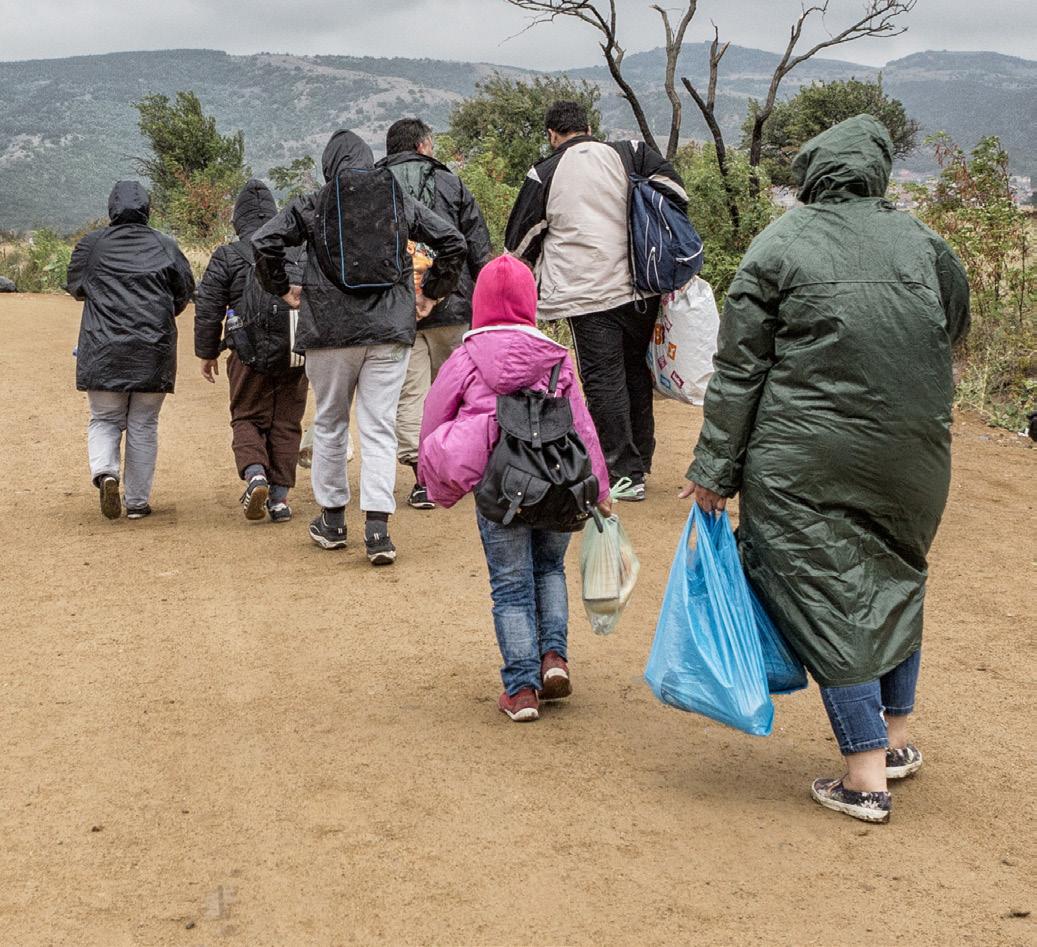

Father Hemrick writes for the Catholic News Service column “The Human Side.”
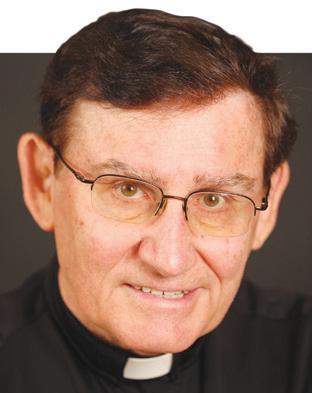
LETTER
Protest Please
The idea that they want to legalize the use of marijuana really scares me. It is addictive and not helpful except if you can use it for medical reasons, which is already legal to do. I have a 70-year-old friend who is trying to beat an addiction to it. Why is there no protest? Alcohol use was at an all-time high during the pandemic, as was domestic abuse, often related to alcohol use. In Minnesota we can now buy alcohol on Sundays, bars are open later, more choices of places to try or flavors to try. How is any of this good for us? Yet no protest? Minnesota had great restrictions for abortion with two top ones: parents/guardians of minors had to be notified before a minor could get an abortion and you had to wait at least 24 hours after deciding you wanted an abortion for it to be performed. They are removed but no protest? I remember when sex with a minor, under 18 years old, was rape. Again, a rule eliminated without any protest. I liked the idea in finance that it is important to take care of the small stuff. I wondered if this wouldn’t help us as Christians? Maybe if we took care of some of these small steps, the big problems like abortion would also be affected. A great video shown to religion high school age students ends with a teenage couple dealing with an unexpected pregnancy. The guy’s advice is “don’t drink.”
St.
John Neumann, Eagan
Share your perspective by emailing
TheCaTholiCSpiriT@arChSpm org. Please limit your letter to the editor to 150 words and include your parish and phone number. The Commentary pages do not necessarily reflect the opinions of The Catholic Spirit.
DECEMBER 8, 2022 COMMENTARY THE CATHOLIC SPIRIT • 17
GUEST COMMENTARY | FATHER
One Year Affordable Flexible Preparing Catholic School Leaders with Faith and Excellence A Graduate Leadership Program Forming the Heart, Mind, and Soul. Le A rn More At our web S ite tod Ay semssp.org/icsl • 651-962-5785 Join a mission-driven community that cultivates spiritual and academic excellence. Gain skills to create vibrant Catholic Schools. The donor advised fund is our most popular and tax-efficient giving tool and makes it easy to plan your annual giving. Maximize your charitable giving, simplify tax time, and give according to your faith. ‘Tis the season for smart giving We’ll guide you through the steps. Call us today at 651.389.0300 ccf-mn.org Catholic Community FOUNDATION OF MINNESOTA
justice
EUGENE HEMRICK
Esther Lenartz
iSTOCK PHOTO | WABENO
What if assisting immigrants is seen as a moral imperative, as an opportunity to repay God for our endowment of a blessed sense of responsibility for the other?
Why I am Catholic
By Thomas Thurlow
Icannot tell you the number of times I have walked across the beautiful campus that the University of Minnesota boasts of and seen the same scene. Hundreds of college students with AirPods shoved into their ears, their heads down and a blank look on their faces as they hurriedly walk to class. This scene plays out on college campuses across the nation and even throughout the professional world. We are so busy getting through the day that we don’t appreciate the gift of what each new day brings.
I started my journey as a Catholic my freshman year. At the time, I loved to party and have a good time when I wasn’t grinding on my schoolwork. I went to Mass every Sunday, but when I wasn’t physically in the church on Sunday mornings, I was living a life completely for myself. But even then, I noticed a pattern: The people who seemed full of life were often the same people who looked miserable during the week. They “lived for the party” but had nothing of true substance to offer when there wasn’t one. They had the same blank look on their faces that mirrored the rest of the campus walking to class in the morning.
When COVID hit halfway through my freshman year, I noticed something strange. I had just gone on a mission trip to Alaska and met a new group of Catholic friends who were unique. They didn’t party like my other friends, but you wouldn’t know it. They laughed and celebrated and talked with such joy and conviction no matter the time or place. And when everyone moved home after COVID hit they were the ones who continued to stay my friends. The people I partied with slowly stopped reaching out. The really fun people at the parties ceded to my new Catholic friends. I stopped craving an occasional crazy night and started craving consistent joy and real friendship.
Yet, their joy was a mystery to me at first. These Catholics weren’t people who were blissfully ignorant. They were people who had lived full lives, made mistakes, encountered real difficulties and suffering, and yet had reason to hope and be truly happy. They were joyful despite all the difficulties of life. And as I grew to know them more, I came to realize that Catholicism is a way of life that brings real joy, whether things are going well or even when they are not.
I’ve grown to understand that “all joy reminds” as C.S. Lewis once said. We remember that we were made for so much more than anything we could possibly conjure up on our own. It reminds us that we will never be happy if we are only living for ourselves. Christ himself says, “Behold, I make all things new” (Rev. 21:5). I can’t help but wonder how many of us college students crave something more than the walk across campus with AirPods in and heads down.
Thurlow, 22, is a senior at the University of Minnesota studying finance, classics with an emphasis on Latin and business law. Outside of work and school, he says, “I am first and foremost a committed disciple of Jesus Christ.” A member of St. Lawrence Catholic Church and Newman Center in Minneapolis who grew up in St. John Neumann parish in Eagan, an avid reader and outdoorsman with a goal to visit every national park in the U.S., Thurlow also enjoys playing any number of sports and spending time with friends and family.
300-500 words to CatholiCSpirit@arChSpm org with subject line “Why I am Catholic.”

18 • THE CATHOLIC SPIRIT DECEMBER 8, 2022
DAVE HRBACEK | THE CATHOLIC SPIRIT
“Why I am Catholic” is an ongoing series in The Catholic Spirit. Want to share why you are Catholic? Submit your story in
PARISH EVENTS
Knights of Columbus Brunch — Dec. 11: 8 a.m.–12:45 p.m. at Epiphany, 1900 111th Ave., NW, Coon Rapids. kC10138.mnknightS org/eventS
Pancake Breakfast and Bake Sale — Dec. 11: 9 a.m. at St. Jerome, 380 E. Roselawn Ave., Maplewood. Lower level. All are welcome.
Stjerome ChurCh org/index php/SCheduleS Calendar
Come to the Stable: A Living Nativity — Dec. 11: 3–6 p.m. at Our Lady of Peace, 5426 12th Ave. S., Minneapolis. Escape the hustle and bustle of the holiday season and take a moment to reflect on the true meaning of Christmas. olpmn org/Come to the Stable
“Behold: God is with us!” Dec. 18: 4:30–6:30 p.m. at St. Paul, 1740 Bunker Lake Blvd. NE, Ham Lake. An evening of music, drama and personal testimonies of conversion. Prelude and carol singing at 4 p.m. Soup dinner and cookies follow. Open to the public, no charge. ChurChofSaintpaul Com/behold
PRAYER/RETREATS/WORSHIP
Advent Morning of Reflection for Mothers of Young Children — Dec. 10: 8–11:30 a.m. at St. Raphael, 7301 Bass Lake Road, Crystal. “Called to Encourage” — Encouraging faith and friendship and finding practical ways to welcome Christ. tinyurl Com/2n4bxmSh

Ignatian men’s silent retreat — Thursday-Sunday most weeks at Demontreville Jesuit Retreat House, 8243 Demontreville Trail. N., Lake Elmo. Freewill donation.
demontrevilleretreat Com
LEARNING CONTINUED FROM PAGE 12
of demographics. It wasn’t until she discovered Feuerstein’s work that she felt like something clicked.
“The paradigm shift happened in my mind: We are teaching, we are not mediating,” Ruff said.
She wrote to the Feuerstein Institute but discovered that at the time, the only training available was in Israel and it was offered exclusively in Hebrew. She decided to gather all the information she could on the method and integrate it into her teaching practices.
Since then, MindCAP cognitive advantage program, which trains teachers in the method, opened in Fort Wayne, Indiana. Ruff has received formal training at the center, most
Order Franciscans Secular (OFS) Third Sundays: 2–4 p.m. at St. Leonard of Port Maurice, 3949 Clinton Ave. S., Minneapolis. Learn more about this group of lay Catholic men and women striving to observe the Gospel of Jesus Christ by following the example of St. Francis. 651-724-1348
MUSIC
“The Christmas Miracle of Jonathan Toomey” — Dec. 9-10: 7 p.m. at St. Therese, 18323 Minnetonka Blvd., Deephaven. Music ministries stage reading of “The Christmas Miracle of Jonathan Toomey,” adapted for the stage by Timothy Gregory, with songs by Michael Mahler. Directed by Marilee Mahler and Dr. Jeff Judge. All proceeds from the goodwill offering will benefit the St. Therese Music Ministry. tinyurl Com/2fS6xp5a Advent Lessons and Carols — Dec. 10: 7 p.m. at Holy Cross, 1621 University Ave., Minneapolis. Lessons and Carols imbue an English tradition with a Polish flare, featuring beloved carols and readings in Polish. Choral music by Palestrina, Wood, Manz, Goldschmidt, Carter, and the premiere of a new carol written by Holy Cross’ music director, Samuel Backman. tinyurl Com/4Sn5jrdr
“The Silence and the Sound” — Dec. 11: 3–4 p.m. at Mary Mother of the Church, 3333 Cliff Road, Burnsville. Music ministry presents: “The Silence and the Sound” a cantata by Heather Sorenson. Choirs plus an orchestra and narrations add song and joy to Advent and Christmas season. Freewill offering. mmotC org Christmas (Back) Together with Steven C —
recently in October.
Peter Spect, a 25-year-old seminarian from the Diocese of Duluth, has been working with Ruff at the St. Paul Seminary since 2021. His diocese recommended that he improve his essay writing abilities — a skill that will translate to priestly tasks such as writing parish bulletin articles, he said.
Spect attended a community college in Duluth for two years before attending the Immaculate Heart of Mary Seminary, where he earned a degree in philosophy. Spect said his work with Ruff has been indispensable in elevating his writing skills to the level expected at the graduate-level, major seminary.
The skills he learns with Ruff will also help with a wide range of priestly duties, such as making big decisions in the
Dec. 15: 7:30 p.m. at the Cathedral of St. Paul, 239 Selby Ave., St. Paul. Goodwill offerings. Steven will be joined by a host of musical guests, the Cathedral Children’s Choir and a special VIP. tinyurl Com/mr4bnd44 25th Annual Festival of Lessons and Carols — Dec. 16: 7 p.m. at St. Bartholomew, 630 E. Wayzata Blvd., Wayzata. Father Michael Joncas, with parish choir and instrumental ensemble for choral pieces, readings, Scripture, poetry and sacred reflections. Plus a sing-along with carols of the season! St bartS org/eventS/leSSonSandCarolS
SPEAKERS
Preparing for Christmas: The Gospel of Matthew’s View — Dec. 13: 7–8:30 p.m. at Risen Savior, 1501 E. County Rd. 42, Burnsville. Advent reflection explores the story of Jesus’ birth as presented in the Gospel of Matthew. Emphasis on the various characters in the story and their response to the birth of Jesus. riSenSavior org/event/advent refleCtion
YOUNG ADULTS

Come and See: Franciscan Brothers — Dec. 16-20: 1–7 p.m. at Franciscan Brothers of Peace, 1101 Desoto St., St. Paul. Men ages 18-35 spend time with the Franciscan Brotherhood/Priesthood. Daily Mass, Holy Hour, Liturgy of the Hours; serve the poor, the unborn, the refugee; road trip to Guadalupe shrine, La Crosse, Wisconsin. Come one day or all days. Request a spot by Dec. 9. Email voCation@brotherSofpeaCe org brotherSofpeaCe org/newS eventS/eventS page
parish, navigating interpersonal relations, asserting his authority as a pastor, and managing his time, Spect said. Ruff said her work at the St. Paul seminaries is unique. No other Catholic seminaries in the nation offer the mediated learning approach to help seminarians who might struggle in the classroom, she said. Spect and Gallagher said they think other seminaries would benefit from a similar program, and they would have benefited from Ruff’s work in their minor seminaries.
“Some of us (seminarians) are more academically inclined, some are not,” Spect said. Ruff’s work helps those who are less academically inclined to be successful, he said.
Editor’s Note: Dunia Ruff is a sister-in-law of Joe Ruff of The Catholic Spirit.
CALENDAR submissions
DEADLINE: Noon Thursday, 14 days before the anticipated Thursday date of publication. We cannot guarantee a submitted event will appear in the calendar. Priority is given to events occurring before the next issue date.
LISTINGS: Accepted are brief notices of upcoming events hosted by Catholic parishes and organizations. If the Catholic connection is not clear, please emphasize it in your submission. Included in our listings are local events submitted by public sources that could be of interest to the larger Catholic community.


ITEMS MUST INCLUDE the following to be considered for publication:
uTime and date of event
uFull street address of event
uDescription of event

uContact information in case of questions
TheCatholiCSpirit Com/CalendarSubmiSSionS
929-6853
Resurrection
Resurrection
Resurrection Cemetery: single crypt; Value: $23,725; Price: $19,000. 507-398-4017
HARDWOOD FLOORS
Sweeney (651) 485-8187
PAINTING
Merriam
Michaels Painting. Texture and Repair. MichaelsPaintingllc coM. (763) 757-3187
PILGRIMAGE
CALENDAR
DECEMBER 8, 2022 THE CATHOLIC SPIRIT • 19 Email: classifiedads@archspm.org • Phone: 651-251-7714 • Fax: 651-291-4460 Next issue: 12-22-22 • Deadline: 3 p.m. 12-14-22 • Rates: $8 per line (35-40 characters per line) • Add a photo/logo for $25 Marketplace • Message Center Classified Ads Ask about our 3 special!time ACCESSIBILITY SOLUTIONS STAIR LIFTS – ELEVATORS WHEELCHAIR LIFTS FOR HOMES, CHURCHES & SCHOOLS Arrow Lift (763) 786-2780 ANTIQUES TOP CASH PAID For Older Furniture • Advertising Signs • Beer Items • Old Clothes • Misc. (651) 227-2469 ATTORNEYS Virginia Ryan, Attorney at Law Trusts, Wills, Probate, Real Estate 1959 Sloan Pl. #110; Maplewood, MN 55117 (651) 631-0616 www.virgielaw.com CEILING TEXTURE Michaels Painting Popcorn Removal & Knock Down Texture TextureCeilings.com (763) 757-3187 CEMETERY LOTS FOR SALE Resurrection Cemetery: 1 crypt $15,195; Walter Polchowne (336)
Cemetery: single lot. Market: $1980, Price: $1000, 952-567-4139
Cemetery: single lot; section 62. Value: $1700; Price: $1200. 612-800-1977
GREAT CATHOLIC SPEAKERS CD of the Month Club Lighthouse Catholic Media, Scott Hahn, Jeff Cavins and more! $5/month includes shipping. Subscribe online at www.lighthousecatholicmedia.org/cdclub Please Enter Code: 11 HANDYMAN WE DO 1,162 THINGS AROUND THE HOME! Catholic Owned Handyman Business: We will fix/ repair and remodel almost anything around the home. Serving entire Metro. Call today. Mention this ad and receive 10% off labor. ACE Handyman Services 952-946-0088.
Sweeney’s Hardwood Floors Autumn’s Here! Spruce up your home with new or refurbished hardwood floors. 15% off refinishing.
For painting & all related services. View our website: PAINTINGBYJERRYWIND.COM or call (651) 699-6140.
Park Painting. Professional Int./ Ext. Painting. WP Hanging. Moderate Prices, Free Estimates. Call Ed (651) 224-3660.
2023. To learn more, go to: WWW. SAINTGABRIELPILGRIM.ORG, or send an email to: SAINTGABRIELTOURS@GMAIL.COM. PRAYERS NOTICE: Prayers must be submitted in advance. Payment of $8 per line must be received before publication RELIGIOUS ITEMS FOR SALE www.Holyart.com Over 50k Religious Items & Church Goods. VACATION/FAMILY GETAWAY Knotty Pines Resort, Park Rapids, MN. 1, 2 & 3 bdrm cabins starting at $565/week. www.knottypinesresort.com (800) 392-2410. Mention this ad for a discount! VEHICLE FOR SALE 2004 Honda Odyssey 7-passenger van; 183M miles; good condition $2800. Contact Jim: 612-618-1774 TheCatholicSpirit.com 952.934.1525 ChanhassenDT.com NOW PLAYING! Cut loose to the rockin’ rhythm of its super-charged Top 40 score! CathSpFL-AUG-2022.qxp_Layout 1 8/12/22 11:45 AM
TRAVEL Join other Minnesota Catholics on the pilgrimage of a lifetime to the Holy Land - May 17-25,
Riding for others
Two cyclists commemorate priest’s 1972 walk from St. Paul to Guatemala mission
By Susan Klemond For The Catholic Spirit
Fifty years ago, a New Ulm diocesan priest walked more than 3,000 miles from St. Paul to Guatemala to help the poor through mission work in that Central American country.
The walk inspired a then-New Ulm teenager into helping the mission there in ways that continue into his adulthood as a member of Nativity of Our Lord in St. Paul — and the walk has more recently inspired a Faribault teen.
This fall, Dan Herbeck, 66, and Mitchell Gibbs, 14, each biked a share of the 3,087-mile walk in a unique way to commemorate the three-month trip in1972 made by Msgr. Greg Schaffer and two Guatemalan companions.
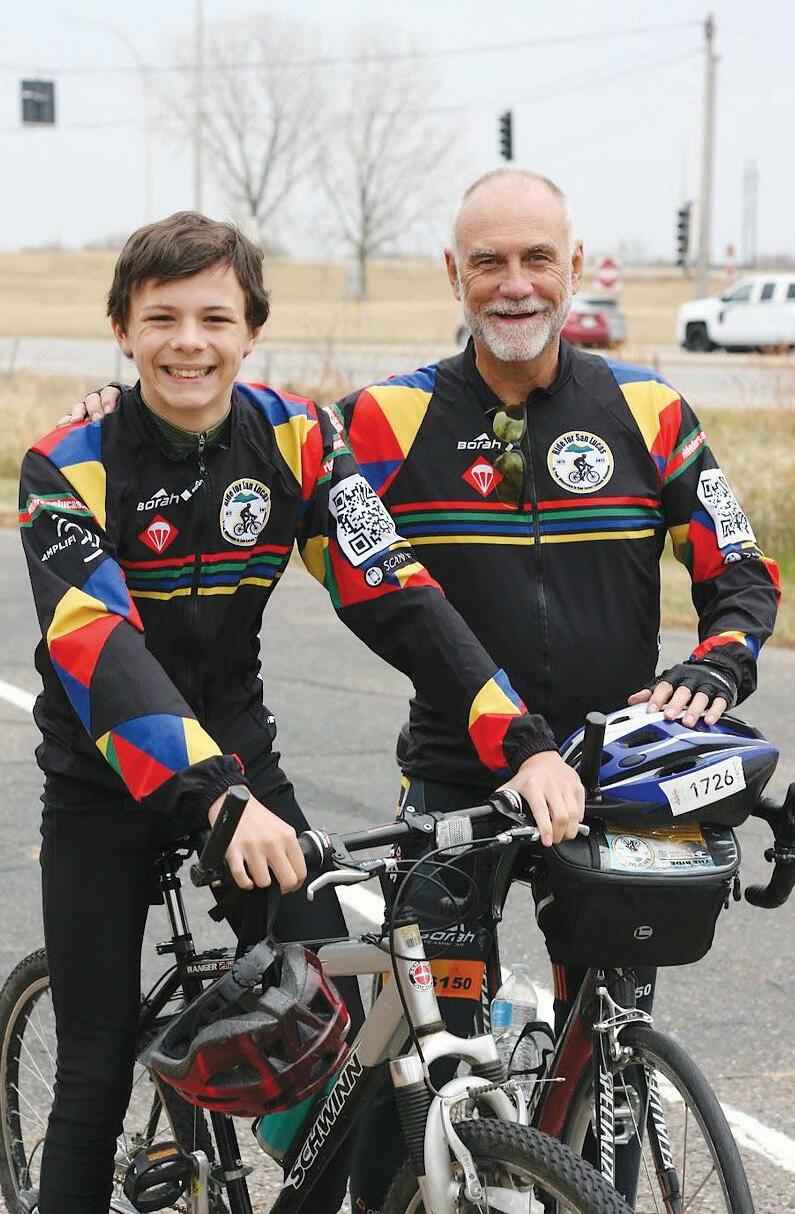
They did not retrace the priest’s exact route because of road changes and safety risks south of the U.S. border. But the cyclists raised money and awareness, and their efforts continue, as they support the mission in San Lucas Tolimán in west-central Guatemala, which Msgr. Schaffer led for decades.
Starting in early September, Herbeck spent three weeks biking 1,788 miles from Minnesota to the U.S. border at Brownsville, Texas. Since late September, Gibbs, of Divine Mercy in Faribault, has been biking the remaining 1,299 miles on shorter rides around his home, rather than through potentially dangerous Mexico and Guatemala.
Their anniversary ride will culminate Jan. 29, 2023, with Gibbs finishing his miles as Herbeck visits the San Lucas mission and rides a symbolic, short distance to mark the 50th anniversary of the walk’s end in 1972.
When Gibbs read about Herbeck’s trip and how he planned to stop at the U.S. border, he and his mother, Andrea Gibbs, talked about “finishing” the trip with shorter rides in Minnesota — an idea he later shared with Herbeck on FaceTime as Herbeck reached the U.S. border. The two cyclists met for the first time on Nov. 3 and biked 15 miles together on a trail near Faribault.
“Father Greg touched so many people, it was such an honor to be representing him amongst all these people who loved him and essentially caught his spirit for the need, and the help, that people needed in Guatemala,” said Herbeck, who hasn’t traveled to the mission but often collected donations for it with classmates while growing up.
Gibbs is biking to raise $12,000 to build a concrete block home at San Lucas Tolimán. His desire stems from learning about the needs in Guatemala during two of his family’s visits to the mission, including a monthlong immersion trip in 2018, when he was 10.
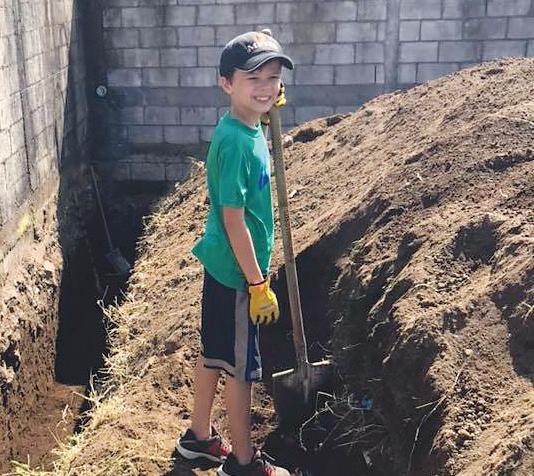
“After being down (there) it was hard to see, because (of) how poverty works,” he said. “But right now, I can do things to help them and change their lives. Since I have the opportunity to do that, it’s just the right thing to do.”
Msgr. Schaffer, who was often called “Father,” pastored the New Ulm diocese’s mission parish of San Lucas Tolimán and spearheaded the mission’s work during Guatemala’s 36-year civil war. A nephew of Msgr. Schaffer’s — Father Greg Schaffer — shares his uncle’s name, and as a priest of the Archdiocese of St. Paul and Minneapolis he serves at the archdiocese’s mission in San Felix, Venezuela.
Today, the mission in San Lucas Tolimán assists more than 25,000 mostly Indigenous Mayans with housing, health care, education and more, said Bill Peterson, executive director of Eagan-based Friends of San Lucas,
a nonprofit that was started to support the mission after Msgr. Schaffer died in 2012.
Msgr. Schaffer and his companions raised about $75,000 on their walk for the mission. To extend the mission’s reach, Friends of San Lucas hopes to raise $1 million during anniversary commemorations of the walk this fall and winter, said Peterson, noting that donors can sponsor one or more of the walk’s 3,087 miles at sanlucasmission.org/walk. (Those wishing to donate specifically to Gibbs’ project can write his name in the comment box on the website donation form.)
“Now we have a base down there with the San Lucas mission, and that mission is reaching out deeper into Guatemala, into the Indigenous tribes that are still in the same situation that San Lucas was in 50 years ago,” Peterson said.
Looking for ways to honor Msgr. Schaffer and help the mission last spring, Herbeck and a friend who chairs the Friends of San Lucas board considered biking the priest’s route, partly because Herbeck couldn’t spare the time to walk but still liked the idea of meeting people along the way. After checking with the U.S. State Department, Herbeck decided that biking through Mexico wouldn’t be safe. While he biked through the U.S., his family and friends took turns driving a donated SUV to support him, following Msgr. Schaffer’s route as much as possible. Herbeck rode from 30 to 110 miles daily, depending on scheduled speaking engagements.
Herbeck said he had mild symptoms after testing positive for COVID-19 in Iowa, and he lost his left mirror on a shoulder-less section of Route 66 in Oklahoma. But he didn’t encounter any major problems. “One of the main highlights of the whole trip was just meeting all the people along the way who already had a relationship with the mission,” he said. “So, I sort of became a representative of the mission even though I’ve never even been to Guatemala.”
Herbeck raised about $12,000 on his trip, which was viewed more as an opportunity to connect with people and encourage involvement than an effort to raise a lot of money, Peterson said.
Gibbs rode 10 to 25 miles a day this fall on his grandfather’s silver Schwinn mountain bike — or on a stationary bike in inclement weather — logging more than 350 miles thus far and raising about $2,000 toward his goal. A home-schooled eighth grader and Boy Scout, Gibbs volunteers regularly at a nursing home and food shelf, is the youngest member of the pastoral care team at Divine Mercy in Faribault and an altar server at funeral Masses. He is also contributing to his cause with earnings from a part-time job.
COURTESY ELIZABETH MILLER
TOP RIGHT Father Greg Schaffer, later Msgr. Schaffer, with Elias Jacinto, lacing up a shoe, and Ronal Motta, who later was among 40,000 other Guatemalans who “disappeared” in that country’s 36-year civil war, as they began their 1972 walk from the State Capitol in St. Paul.
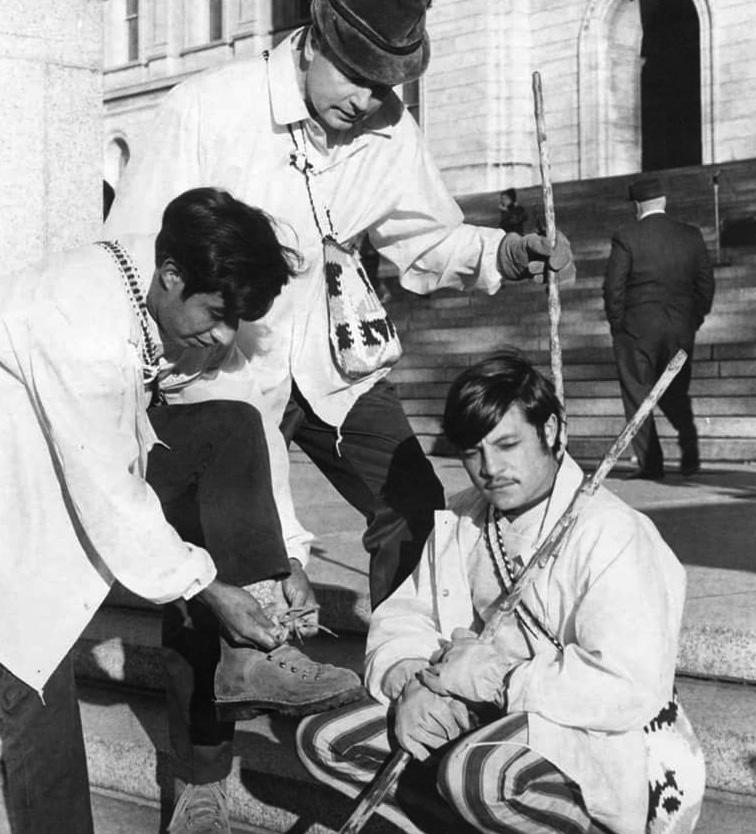 COURTESY FRIENDS OF SAN LUCAS
COURTESY FRIENDS OF SAN LUCAS
LOWER RIGHT Gibbs helps dig in 2018 for an addition to a Catholic school in San Lucas Tolimán founded in 1968 by Msgr. Schaffer and the School Sisters of Notre Dame.
COURTESY ANDREA GIBBS
At the mission, Gibbs has helped cook, serve the elderly and assisted with building projects. Seeing residents’ poor housing situations particularly made him want to help.
Andrea and Jeremy Gibbs have made many trips to the mission since they were students at Minnesota State University, Mankato. They said they are proud of their son’s initiative and effort.
“It isn’t even about” (him), Andrea said of Mitchell, the third of the couple’s five children. “It’s about the difference that it’s going to make for other people. They will accept that kindness and do something kind for other people, and just to be able to see a ripple effect, that is good.”
The family doesn’t plan to attend the January anniversary celebration at the mission, but they hope to return at some point, Andrea said.
Jeremy said he is glad Mitchell has found his own way to help. “I see him taking off out of the driveway for 10-to-20-mile rides all over Rice County and am inspired by his grit and dedication to this very important and worthy cause.”
20 • THE CATHOLIC SPIRIT DECEMBER 8 , 2022
THELASTWORD
ABOVE LEFT Mitchell Gibbs, left, and Dan Herbeck biked 15 miles together on a trail near Faribault Nov. 3. Herbeck gave Gibbs a bicycle shirt that matched his own, with the logo for the commemorative bike ride and sponsors for the ride.




 JOE
JOE







































 By Christina Capecchi For The Catholic Spirit
By Christina Capecchi For The Catholic Spirit






















 COURTESY FRIENDS OF SAN LUCAS
COURTESY FRIENDS OF SAN LUCAS